Symptoms of infection in testicles. Epididymitis: Symptoms, Causes, and Treatment of Testicular Infection
What are the symptoms of epididymitis. How is epididymitis diagnosed. What causes epididymitis. How is epididymitis treated. Can epididymitis lead to complications. Is epididymitis contagious. How can epididymitis be prevented.
Understanding Epididymitis: A Comprehensive Overview
Epididymitis is a medical condition characterized by inflammation of the epididymis, a coiled tube located at the back of the testicle that stores and carries sperm. This condition can cause significant discomfort and, if left untreated, may lead to more serious complications. In this comprehensive guide, we’ll explore the symptoms, causes, diagnosis, and treatment options for epididymitis, as well as preventive measures and potential complications.
Recognizing the Symptoms of Epididymitis
Identifying the symptoms of epididymitis is crucial for early diagnosis and treatment. The most common signs include:
- Unilateral testicular pain and tenderness
- Swelling of the epididymis (typically starting at the tail)
- Scrotal swelling or redness
- Tenderness and swelling of the spermatic cord
- Fever (in some cases)
- Urethral discharge or painful urination (if caused by an STI)
Do the symptoms always appear on one side? While epididymitis typically affects one testicle, bilateral symptoms may occur in some cases. Bilateral pain should raise suspicion of other potential causes and may require further investigation.

Causes and Risk Factors of Epididymitis
Epididymitis can be caused by various factors, including:
Sexually Transmitted Infections (STIs)
Common STIs that can lead to epididymitis include:
- Chlamydia trachomatis
- Neisseria gonorrhoeae
- Mycoplasma genitalium
Non-Sexually Transmitted Causes
Other causes of epididymitis may include:
- Enteric organisms (e.g., Escherichia coli)
- Urinary tract infections
- Bladder outlet obstruction (e.g., benign prostatic hyperplasia)
- Urinary tract instrumentation or surgery
- Systemic diseases or immunosuppression
Are there any specific risk factors for epididymitis? Men who engage in unprotected sexual intercourse, have multiple sexual partners, or are the insertive partner during anal sex may be at higher risk for STI-related epididymitis. Additionally, older men with urinary tract issues or those who have undergone prostate procedures may be more susceptible to non-sexually transmitted forms of epididymitis.
Diagnostic Approaches for Epididymitis
Accurate diagnosis of epididymitis is essential for appropriate treatment. Healthcare providers typically use a combination of methods to diagnose the condition:
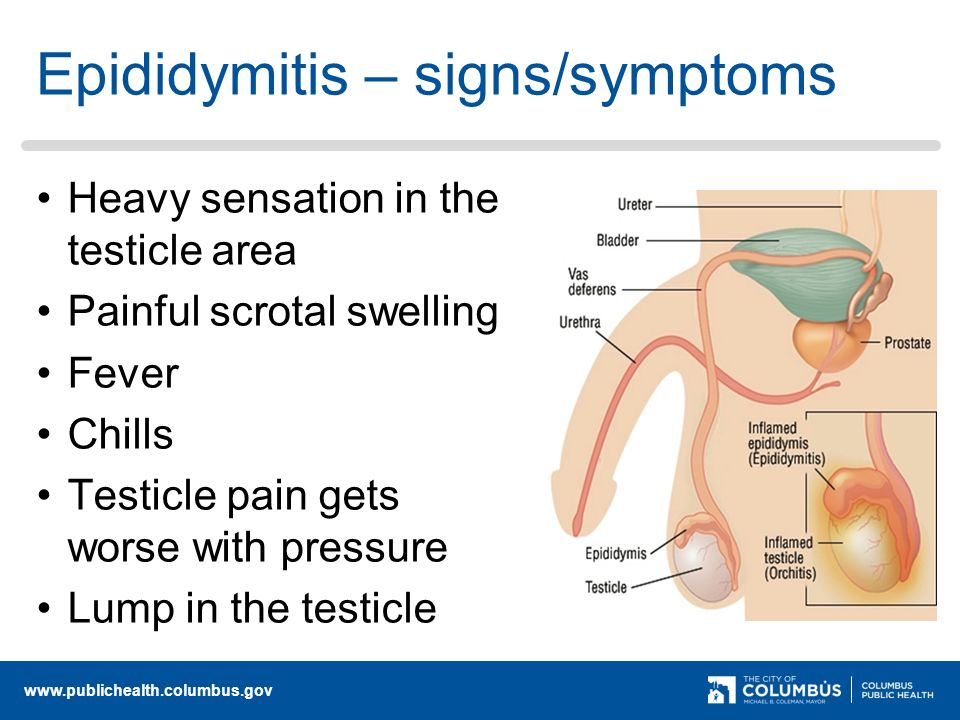
Physical Examination
A thorough physical examination is crucial in diagnosing epididymitis. The healthcare provider will check for:
- Swelling and tenderness of the epididymis
- Scrotal swelling or redness
- Presence of a hydrocele (fluid accumulation around the testicle)
- Tenderness along the spermatic cord
Laboratory Tests
Several tests may be performed to confirm the diagnosis and identify the underlying cause:
- Urinalysis to check for signs of infection
- Urine culture to identify any bacteria present
- STI screening tests for chlamydia, gonorrhea, and other potential pathogens
- Gram, methylene blue, or gentian violet stain of urethral secretions to check for inflammation and specific bacteria
Imaging Studies
In some cases, imaging studies may be necessary:
- Scrotal ultrasound: Primarily used to rule out testicular torsion, a surgical emergency that can mimic epididymitis symptoms
- Radionuclide scanning: The most accurate method for diagnosing epididymitis, but not routinely available
How accurate is ultrasound in diagnosing epididymitis? While ultrasound can demonstrate epididymal hyperemia and swelling associated with epididymitis, it provides minimal diagnostic usefulness for men with a clinical presentation consistent with epididymitis. A negative ultrasound does not rule out epididymitis and thus does not alter clinical management.
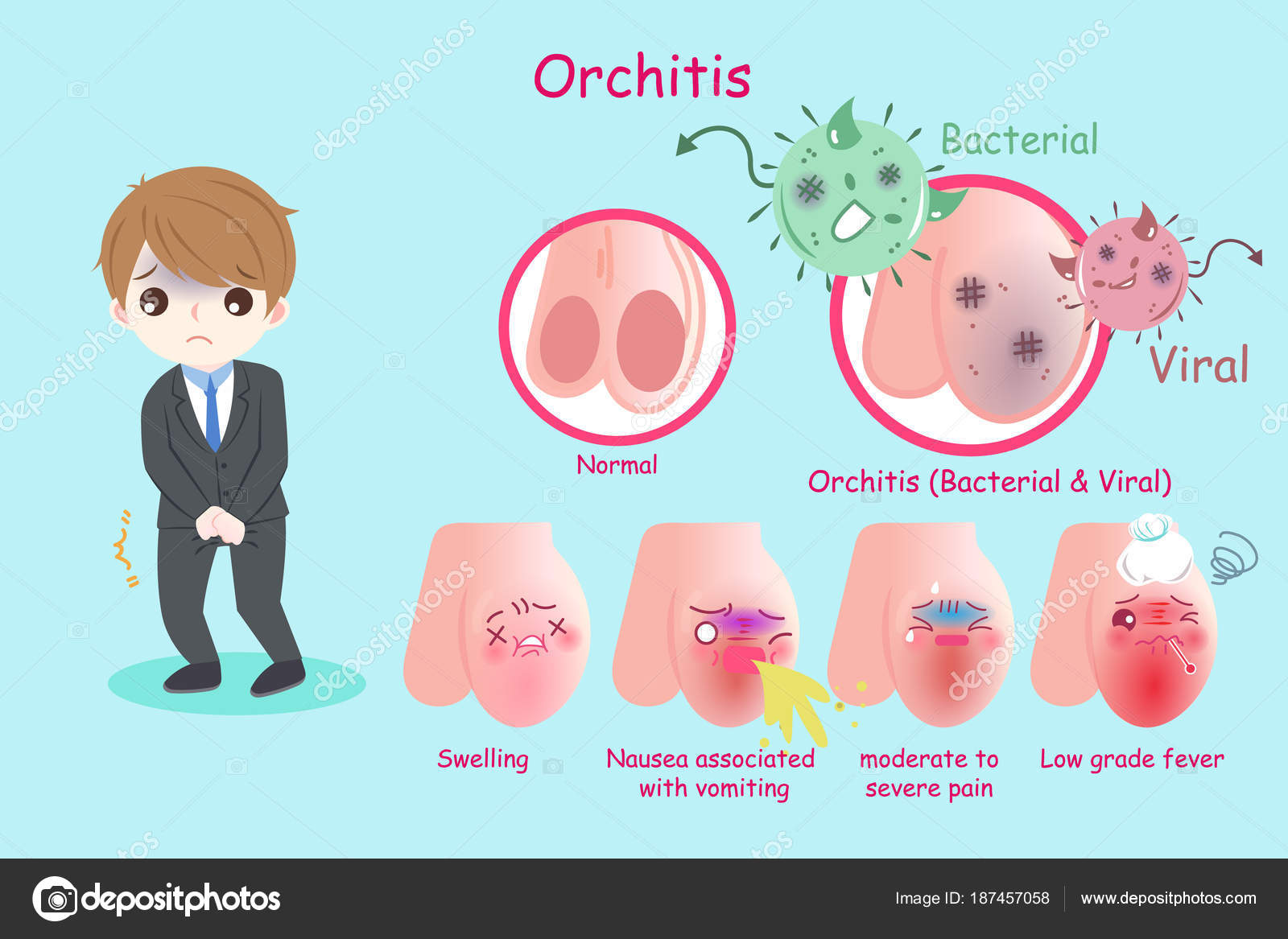
Treatment Options for Epididymitis
The treatment of epididymitis depends on the underlying cause and severity of the condition. Here are the main approaches:
Antibiotic Therapy
Antibiotics are the primary treatment for epididymitis caused by bacterial infections:
- For STI-related epididymitis: Combination therapy with ceftriaxone and doxycycline is often recommended
- For non-STI related epididymitis: Fluoroquinolones like levofloxacin may be prescribed
Supportive Measures
In addition to antibiotics, supportive care can help alleviate symptoms:
- Rest and scrotal elevation to reduce swelling
- Cold compresses to alleviate pain and inflammation
- Over-the-counter pain relievers such as ibuprofen or acetaminophen
Follow-up Care
Regular follow-up appointments are essential to ensure proper healing and to address any potential complications. Partners of patients with STI-related epididymitis should also be evaluated and treated to prevent reinfection.
How long does it take for epididymitis to resolve with treatment? With appropriate antibiotic therapy and supportive care, most cases of acute epididymitis begin to improve within 24-72 hours. However, complete resolution may take several weeks, and patients should follow their healthcare provider’s instructions carefully.
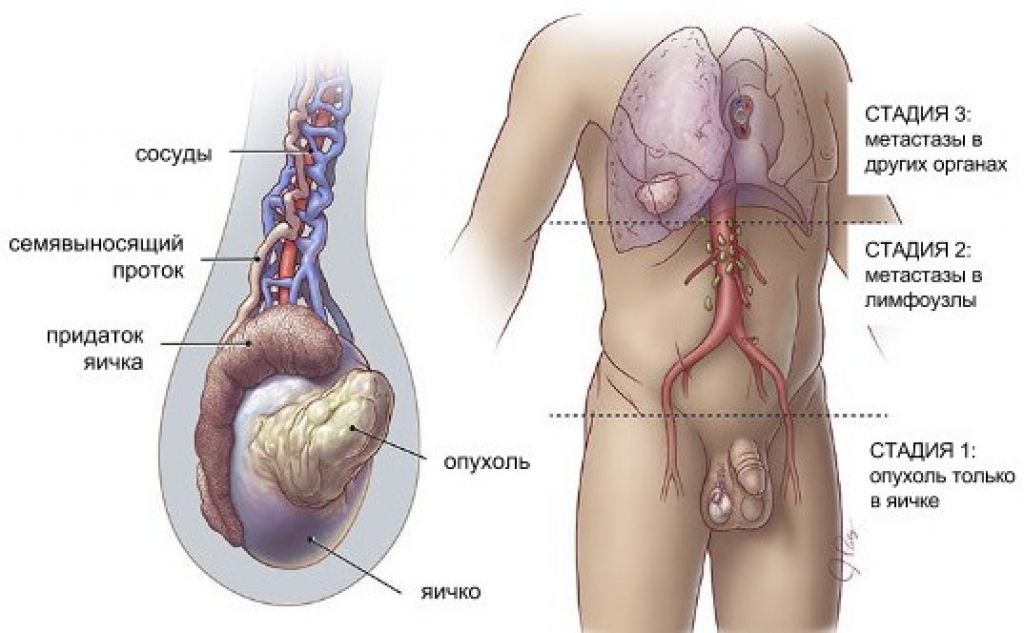
Potential Complications of Epididymitis
While most cases of epididymitis resolve with proper treatment, some patients may experience complications:
- Chronic epididymitis: Persistent pain and discomfort lasting more than 6 weeks
- Abscess formation: A collection of pus in the scrotum that may require surgical drainage
- Reduced fertility: In some cases, epididymitis can lead to scarring of the epididymis, potentially affecting sperm production and transport
- Testicular atrophy: Rarely, severe or recurrent epididymitis may cause shrinkage of the affected testicle
Can epididymitis cause permanent damage? While most cases of epididymitis resolve without long-term consequences, severe or recurrent episodes may lead to scarring or reduced fertility in some men. Early diagnosis and proper treatment are crucial in minimizing the risk of complications.
Prevention Strategies for Epididymitis
Preventing epididymitis involves addressing its various causes and risk factors:
STI Prevention
- Practice safe sex by using condoms consistently and correctly
- Limit the number of sexual partners
- Get regular STI screenings, especially if you’re sexually active with multiple partners
General Health Measures
- Maintain good hygiene, especially in the genital area
- Stay hydrated and urinate regularly to flush out bacteria from the urinary tract
- Seek prompt treatment for any urinary tract infections or other genitourinary issues
Medical Management
- For men with recurrent urinary tract infections or prostate issues, work with your healthcare provider to manage these conditions effectively
- Follow proper hygiene protocols during any urinary tract procedures or surgeries
Is epididymitis preventable in all cases? While many cases of epididymitis can be prevented through safe sex practices and good hygiene, some instances may occur due to underlying medical conditions or anatomical factors that are not easily preventable. Regular check-ups and prompt attention to any genital or urinary symptoms can help reduce the risk of developing epididymitis.
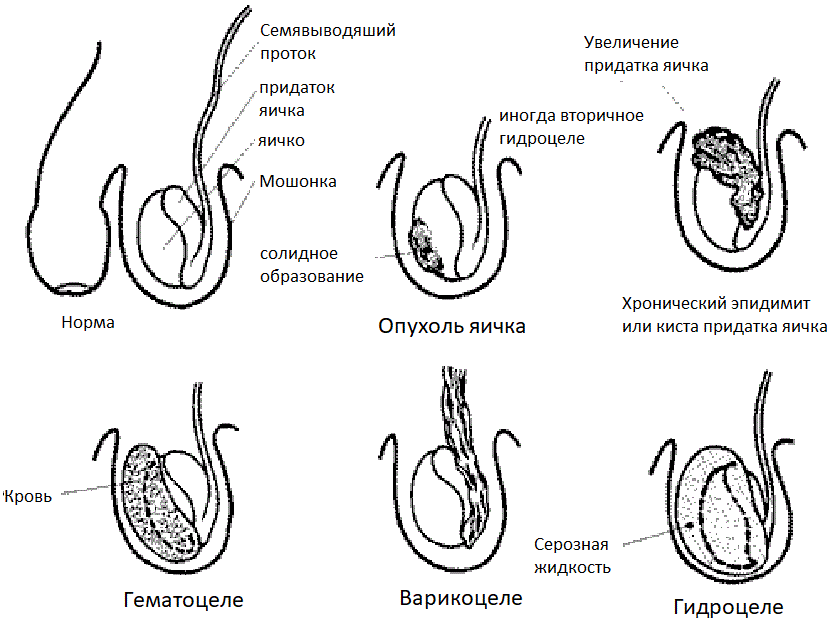
Living with Epididymitis: Long-term Considerations
For individuals who have experienced epididymitis, there are several long-term considerations to keep in mind:
Follow-up Care
Regular check-ups with a healthcare provider are important, especially for those who have had recurrent episodes of epididymitis. These appointments can help:
- Monitor for any signs of chronic epididymitis
- Assess fertility, if desired
- Address any ongoing pain or discomfort
Lifestyle Adjustments
Some men may need to make lifestyle changes to reduce the risk of recurrence:
- Wearing supportive underwear during physical activities
- Avoiding activities that put excessive pressure on the scrotum
- Maintaining good overall health through diet and exercise
Fertility Concerns
Men who have experienced epididymitis and are concerned about their fertility should discuss this with their healthcare provider. In some cases, a semen analysis may be recommended to assess sperm quality and quantity.
Can epididymitis recur after successful treatment? Yes, epididymitis can recur, especially if the underlying cause is not adequately addressed. This is why follow-up care and preventive measures are crucial, even after the initial episode has resolved.
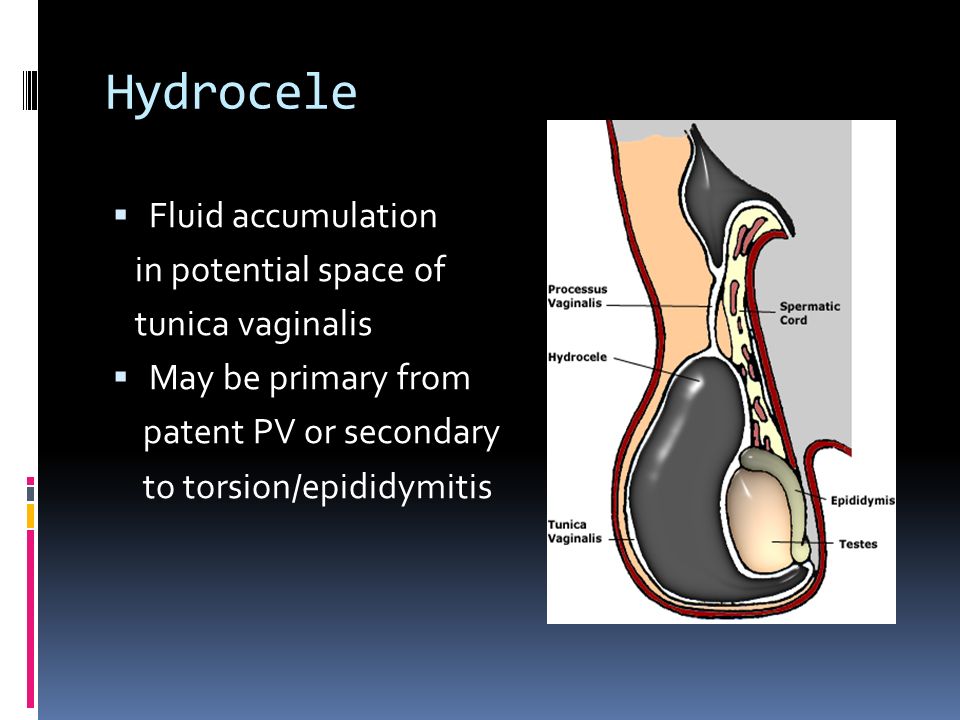
Differentiating Epididymitis from Other Testicular Conditions
It’s important to distinguish epididymitis from other conditions that can cause testicular pain or swelling:
Testicular Torsion
This is a medical emergency that requires immediate surgical intervention. Key differences include:
- Sudden onset of severe pain
- Lack of fever or urinary symptoms
- More common in adolescents and young adults
Orchitis
Inflammation of the testicle itself, which can occur alone or in conjunction with epididymitis (epididymo-orchitis). Orchitis may be caused by viral infections like mumps.
Testicular Cancer
While typically painless, testicular cancer can sometimes cause discomfort. Regular self-examinations and medical check-ups are important for early detection.
Varicocele
An enlargement of the veins within the scrotum, which can cause a dull ache or feeling of heaviness.
How can one differentiate between these conditions? While some symptoms may overlap, the timing, severity, and associated factors can help distinguish between these conditions. However, any persistent testicular pain or swelling should be evaluated by a healthcare professional to ensure an accurate diagnosis and appropriate treatment.

Epididymitis in Special Populations
While epididymitis can affect men of all ages, there are some considerations for specific groups:
Adolescents and Young Adults
In this age group, epididymitis is often associated with sexually transmitted infections. Key points include:
- Importance of confidential STI testing and treatment
- Education on safe sex practices
- Consideration of HPV vaccination if not already received
Older Adults
In men over 35, epididymitis is more likely to be caused by non-sexually transmitted bacteria. Considerations include:
- Evaluation of urinary tract health, including prostate examination
- Assessment of any recent urological procedures
- Management of underlying conditions like diabetes or immunosuppression
Men Who Have Sex with Men (MSM)
This group may have specific risk factors and considerations:
- Higher risk of STI-related epididymitis, including antibiotic-resistant strains
- Importance of comprehensive STI screening
- Discussion of HIV pre-exposure prophylaxis (PrEP) if appropriate
Are there any specific guidelines for managing epididymitis in these populations? While the general principles of diagnosis and treatment remain similar, healthcare providers may tailor their approach based on the patient’s age, sexual history, and risk factors. For example, adolescents may require more extensive counseling on sexual health, while older adults might need a more thorough evaluation of their urinary tract health.

Emerging Research and Future Directions in Epididymitis Management
The field of epididymitis research continues to evolve, with several areas of ongoing investigation:
Antibiotic Resistance
With the rise of antibiotic-resistant strains of bacteria, researchers are exploring:
- New antibiotic combinations for treating resistant infections
- Alternative treatment approaches, such as bacteriophage therapy
- Rapid diagnostic tests to identify resistant strains quickly
Immunological Factors
Studies are investigating the role of the immune system in epididymitis, including:
- Potential autoimmune components in chronic epididymitis
- Development of immunomodulatory therapies
- Vaccines against common pathogens causing epididymitis
Fertility Preservation
Research is ongoing to better understand and mitigate the impact of epididymitis on fertility:
- Novel techniques to reduce inflammation and prevent scarring
- Targeted therapies to protect sperm production and motility
- Improved methods for assessing and preserving fertility in affected men
What potential breakthroughs can we expect in epididymitis treatment? While it’s difficult to predict specific breakthroughs, ongoing research suggests that future treatments may be more personalized, taking into account the patient’s individual risk factors, immune status, and the specific pathogens involved. Additionally, advancements in molecular diagnostics may lead to faster, more accurate diagnosis and targeted treatment approaches.
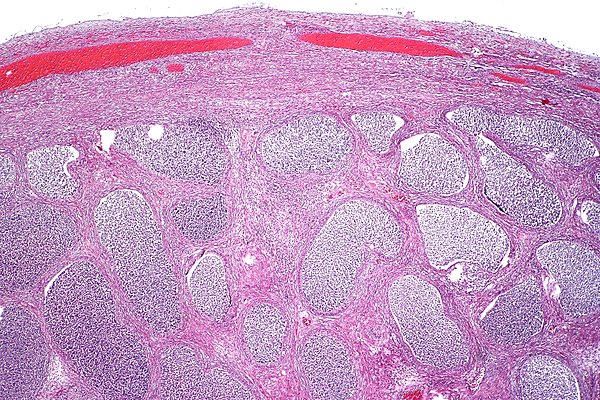
In conclusion, epididymitis is a complex condition that requires prompt diagnosis and appropriate treatment to prevent complications and ensure optimal outcomes. By understanding the symptoms, causes, and management strategies, individuals can take proactive steps to protect their reproductive health. As research continues to advance our understanding of this condition, we can look forward to more effective and tailored approaches to prevention and treatment in the future.
Epididymitis – STI Treatment Guidelines
Acute epididymitis is a clinical syndrome causing pain, swelling, and inflammation of the epididymis and lasting <6 weeks (1191). Sometimes a testicle is also involved, a condition referred to as epididymo-orchitis. A high index of suspicion for spermatic cord (testicular) torsion should be maintained among men who have a sudden onset of symptoms associated with epididymitis because this condition is a surgical emergency.
Acute epididymitis can be caused by STIs (e.g., C. trachomatis, N. gonorrhoeae, or M. genitalium) or enteric organisms (i.e., Escherichia coli) (1192). Acute epididymitis caused by an STI is usually accompanied by urethritis, which is frequently asymptomatic. Acute epididymitis caused by sexually transmitted enteric organisms might also occur among men who are the insertive partner during anal sex. Nonsexually transmitted acute epididymitis caused by genitourinary pathogens typically occurs with bacteriuria secondary to bladder outlet obstruction (e. g., benign prostatic hyperplasia) (1193). Among older men, nonsexually transmitted acute epididymitis is also associated with prostate biopsy, urinary tract instrumentation or surgery, systemic disease, or immunosuppression. Uncommon infectious causes of nonsexually transmitted acute epididymitis (e.g., Fournier’s gangrene) should be managed in consultation with a urologist.
g., benign prostatic hyperplasia) (1193). Among older men, nonsexually transmitted acute epididymitis is also associated with prostate biopsy, urinary tract instrumentation or surgery, systemic disease, or immunosuppression. Uncommon infectious causes of nonsexually transmitted acute epididymitis (e.g., Fournier’s gangrene) should be managed in consultation with a urologist.
Chronic epididymitis is characterized by a ≥6-week history of symptoms of discomfort or pain in the scrotum, testicle, or epididymis. Chronic infectious epididymitis is most frequently observed with conditions associated with a granulomatous reaction. Mycobacterium tuberculosis (TB) is the most common granulomatous disease affecting the epididymis and should be suspected, especially among men with a known history of or recent exposure to TB. The differential diagnosis of chronic noninfectious epididymitis, sometimes termed orchialgia or epididymalgia, is broad (e.g., trauma, cancer, autoimmune conditions, or idiopathic conditions).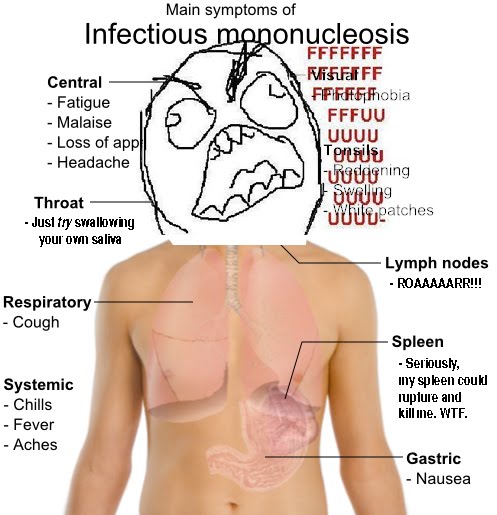 Men with this diagnosis should be referred to a urologist for clinical management (1191,1192).
Men with this diagnosis should be referred to a urologist for clinical management (1191,1192).
Diagnostic Considerations
Men who have acute epididymitis typically have unilateral testicular pain and tenderness, hydrocele, and palpable swelling of the epididymis. Although inflammation and swelling usually begin in the tail of the epididymis, it can spread to the rest of the epididymis and testicle. The spermatic cord is usually tender and swollen. Spermatic cord (testicular) torsion, a surgical emergency, should be considered in all cases; however, it occurs more frequently among adolescents and men without evidence of inflammation or infection. For men with severe unilateral pain with sudden onset, those whose test results do not support a diagnosis of urethritis or urinary tract infection, or for whom diagnosis of acute epididymitis is questionable, immediate referral to a urologist for evaluation for testicular torsion is vital because testicular viability might be compromised.
Bilateral symptoms should increase suspicion of other causes of testicular pain. Radionuclide scanning of the scrotum is the most accurate method for diagnosing epididymitis but it is not routinely available. Ultrasound should be used primarily for ruling out torsion of the spermatic cord in cases of acute, unilateral, painful scrotal swelling. However, because partial spermatic cord torsion can mimic epididymitis on scrotal ultrasound, differentiation between spermatic cord torsion and epididymitis when torsion is not ruled out by ultrasound should be made on the basis of clinical evaluation. Although ultrasound can demonstrate epididymal hyperemia and swelling associated with epididymitis, it provides minimal diagnostic usefulness for men with a clinical presentation consistent with epididymitis. A negative ultrasound does not rule out epididymitis and thus does not alter clinical management. Ultrasound should be reserved for men if torsion of the spermatic cord is suspected or for those with scrotal pain who cannot receive an accurate diagnosis by history, physical examination, and objective laboratory findings.:max_bytes(150000):strip_icc()/hepatitis-symptoms-1760105-FINAL-38d3a724b7174e2f9f290e70db88e197.jpg)
All suspected cases of acute epididymitis should be evaluated for objective evidence of inflammation by one of the following POC tests:
- Gram, MB, or GV stain of urethral secretions demonstrating ≥2 WBCs per oil immersion field (737) (see Urethritis). These stains are preferred POC diagnostic tests for evaluating urethritis because they are highly sensitive and specific for documenting both urethral inflammation and presence or absence of gonococcal infection. Gonococcal infection is established by documenting the presence of WBC-containing intracellular gram-negative or purple diplococci on urethral Gram, MB, or GV stain, respectively.
- Positive leukocyte esterase test on first-void urine.
- Microscopic examination of sediment from a spun first-void urine demonstrating ≥10 WBCs/HPF.
All suspected cases of acute epididymitis should be tested for C. trachomatis and N. gonorrhoeae by NAAT. Urine is the preferred specimen for NAAT for men (553). Urine cultures for chlamydial and gonococcal epididymitis are insensitive and are not recommended. Urine bacterial cultures should also be performed for all men to evaluate for the presence of genitourinary organisms and to determine antibiotic susceptibility.
Urine cultures for chlamydial and gonococcal epididymitis are insensitive and are not recommended. Urine bacterial cultures should also be performed for all men to evaluate for the presence of genitourinary organisms and to determine antibiotic susceptibility.
Treatment
To prevent complications and transmission of STIs, presumptive therapy for all sexually active men is indicated at the time of the visit before all laboratory test results are available. Selection of presumptive therapy is based on risk for chlamydial and gonococcal infections or enteric organisms. Treatment goals for acute epididymitis are 1) microbiologic infection cure, 2) improvement of signs and symptoms, 3) prevention of transmission of chlamydia and gonorrhea to others, and 4) decreased potential for chlamydial or gonococcal epididymitis complications (e.g., infertility or chronic pain). Although the majority of men with acute epididymitis can be treated on an outpatient basis, referral to a specialist and hospitalization should be considered when severe pain or fever indicates other diagnoses (e. g., torsion, testicular infarction, abscess, or necrotizing fasciitis) or when men are unable to comply with an antimicrobial regimen. Age, history of diabetes, fever, and elevated C-reactive protein can indicate more severe disease requiring hospitalization (1193).
g., torsion, testicular infarction, abscess, or necrotizing fasciitis) or when men are unable to comply with an antimicrobial regimen. Age, history of diabetes, fever, and elevated C-reactive protein can indicate more severe disease requiring hospitalization (1193).
Epididymo-orchitis | Symptoms, Treatment and Causes
What is epididymo-orchitis?
- Epididymitis means inflammation of the epididymis (the structure next to the testicle (testis) that is involved in making sperm).
- Orchitis means inflammation of a testicle.
As the epididymis and testis lie next to each other, it is often difficult to tell if the epididymis, the testis, or both are inflamed. Therefore, the term epididymo-orchitis is often used.
What causes epididymo-orchitis?
Most cases are due to an infection. Causes of infection include the following:
A complication from a urine infection
Germs (bacteria) such as E.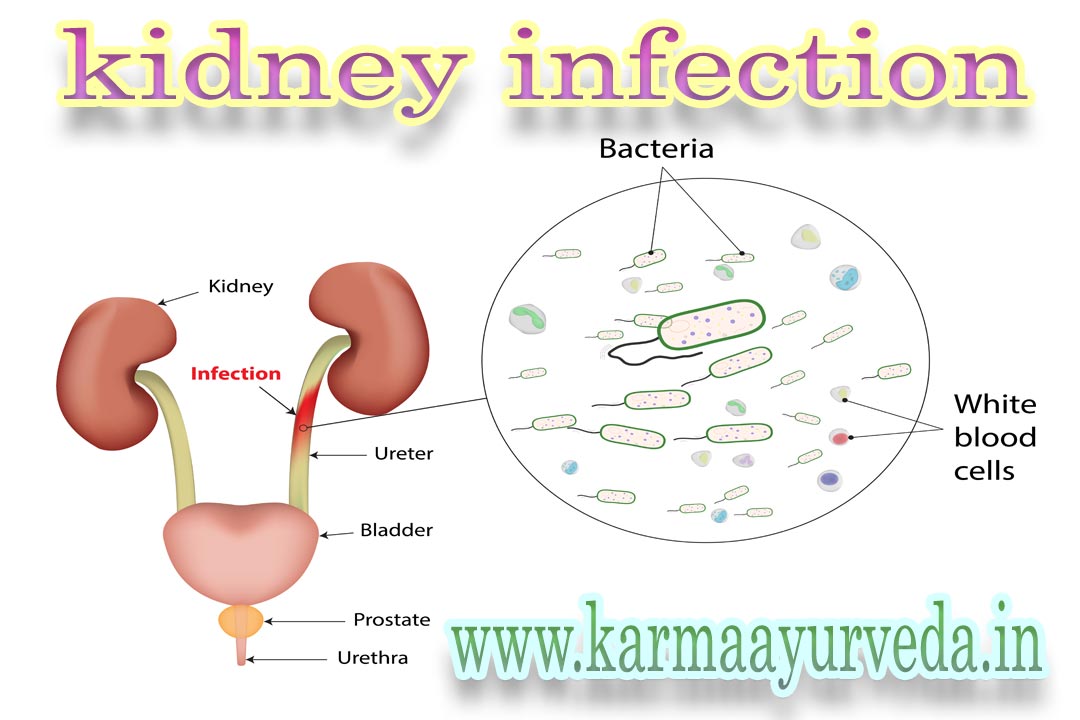 coli that cause urine infections can sometimes track down the vas deferens to cause an epididymo-orchitis. This can happen at any age and is the most common cause of epididymo-orchitis in men aged over 35 years. This is because partial blockage of urine flow becomes more common with increasing age, due an enlarged prostate or narrowing of the urethra (urethral stricture). The urethra is the tube that urine flows out of from the bladder. Partial blockage of urine makes you more prone to develop urine infections. A complication of a urine infection is also the usual cause of epididymo-orchitis in young boys.
coli that cause urine infections can sometimes track down the vas deferens to cause an epididymo-orchitis. This can happen at any age and is the most common cause of epididymo-orchitis in men aged over 35 years. This is because partial blockage of urine flow becomes more common with increasing age, due an enlarged prostate or narrowing of the urethra (urethral stricture). The urethra is the tube that urine flows out of from the bladder. Partial blockage of urine makes you more prone to develop urine infections. A complication of a urine infection is also the usual cause of epididymo-orchitis in young boys.
Sexually transmitted infection
A sexually transmitted infection is the most common cause of epididymo-orchitis in young men (but can occur in any sexually active man). It most commonly occurs with chlamydial and gonorrhoeal infections. In men, these infections typically infect the urethra to cause a urethritis. However, sometimes the infection can track down the vas deferens to the epididymis and testicle (testis).:max_bytes(150000):strip_icc()/hookworm-overview-4176230_FINAL-5c05c35ac9e77c0001e0b249.png)
The mumps virus
The mumps virus used to be a common cause. Most people with mumps develop swelling of the parotid salivary glands. However, mumps in boys also causes epididymo-orchitis in about 1 in 5 cases. The virus gets to the testicles via the bloodstream. This cause is now uncommon since the measles, mumps and rubella (MMR) immunisation is now routinely given to children.
An operation to the prostate or urethra
This may allow germs (bacteria) into the urethra which may track down to the testicles. Epididymo-orchitis used to be a common complication after removal of the prostate (prostatectomy). This is now rare due to better surgical techniques.
Medication
Epididymo-orchitis can occasionally be a side-effect of a medicine called amiodarone. It normally occurs at doses above 200 mg, especially when the dosage range reaches 400-800 mg.
Uncommon causes
Other viral infections are uncommon causes of epididymo-orchitis. Infection from other parts of the body can, rarely, travel in the blood to the testicles, such as tuberculosis (TB) and brucellosis. When this happens it is usually in people who have a problem with their immune system (for example, people with AIDS). Schistosomiasis is a tropical infectious disease that can cause epididymo-orchitis. Men with Behçet’s disease may develop inflamed testicles to cause a non-infective epididymo-orchitis. Injury to the scrotum can cause inflammation of the epididymis and testicle.
When this happens it is usually in people who have a problem with their immune system (for example, people with AIDS). Schistosomiasis is a tropical infectious disease that can cause epididymo-orchitis. Men with Behçet’s disease may develop inflamed testicles to cause a non-infective epididymo-orchitis. Injury to the scrotum can cause inflammation of the epididymis and testicle.
Who develops epididymo-orchitis?
Epididymo-orchitis occurs in about 1 in 1,000 males. It is common in men aged 15-30 years and in men aged over 60 years. It does not occur very often before puberty. About 3 in 10 boys who have mumps after puberty develop orchitis. Your risk of getting epididymo-orchitis is increased if you have a catheter or other instruments inserted into the urethra.
Epididymo-orchitis symptoms
Symptoms usually develop quickly – over a day or so. The affected epididymis and testicle swell rapidly and the scrotum becomes enlarged, tender and red. It can be very painful./GettyImages-143072239-5c0609d3c9e77c0001ccfe60.jpg)
There may be other symptoms if the epididymo-orchitis is a complication from another infection. For example: pain on passing urine if you have a urine infection; a discharge from the penis if you have a urethral infection; etc. As with any infection, you may have a high temperature (fever) and feel generally unwell.
Are any tests needed?
Tests to look for infecting germs (bacteria)
A urine test will usually be done if a urine infection appears to be the root cause. A sample (swab) from the urethra or other tests may be done if a sexually transmitted infection is thought to be the root cause. Sexual partners of people with epididymo-orchitis caused by a sexually transmitted infection will also need testing.
See separate leaflets called Genital Chlamydia, Urethritis and Urethral Discharge in Men and Gonorrhoea for more details.
Tests of the urinary tract
Tests to look into the urethra and bladder may be needed if a urine infection is the cause and this is thought to be due to partial blockage of urine flow or other urinary tract abnormalities.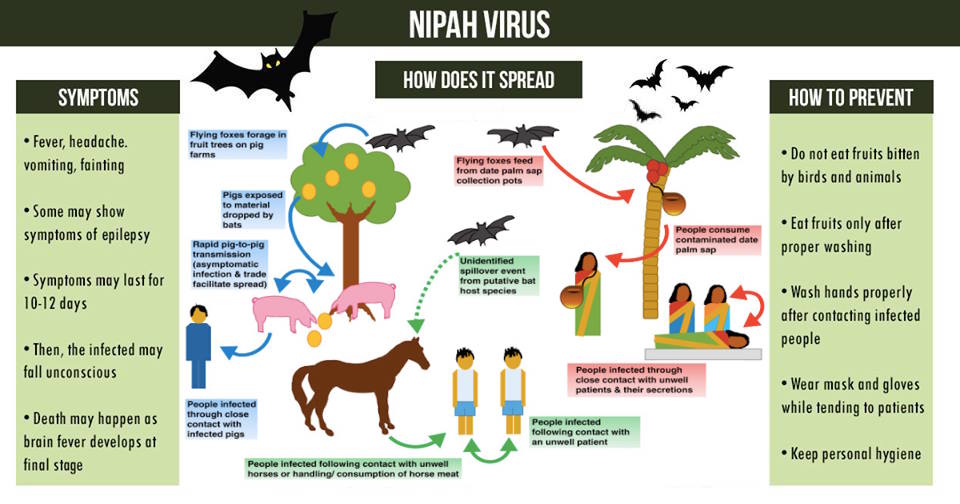
See separate leaflets called Urine Infection in Men and Urine Infection in Children for more details.
Epididymo-orchitis treatment
A course of antibiotic medicines is usually advised as soon as epididymo-orchitis is diagnosed. These normally work well. Pain usually eases within a few days but swelling may take a week or so to go down, sometimes longer. The choice of the antibiotic depends on the underlying cause of the infection.
If a sexually transmitted infection is the cause then you should not have sex until treatment and follow-up have been completed. Sexual partners of men with epididymo-orchitis caused by a sexually transmitted infection may also need antibiotic treatment.
Antibiotics do not kill viruses and they are not needed if a viral infection is the cause – for example, mumps.
You may find that supporting underwear helps to ease the pain. Painkillers and ice packs will also ease the pain.
Are there any complications from epididymo-orchitis?
Most people recover fully and complications are uncommon.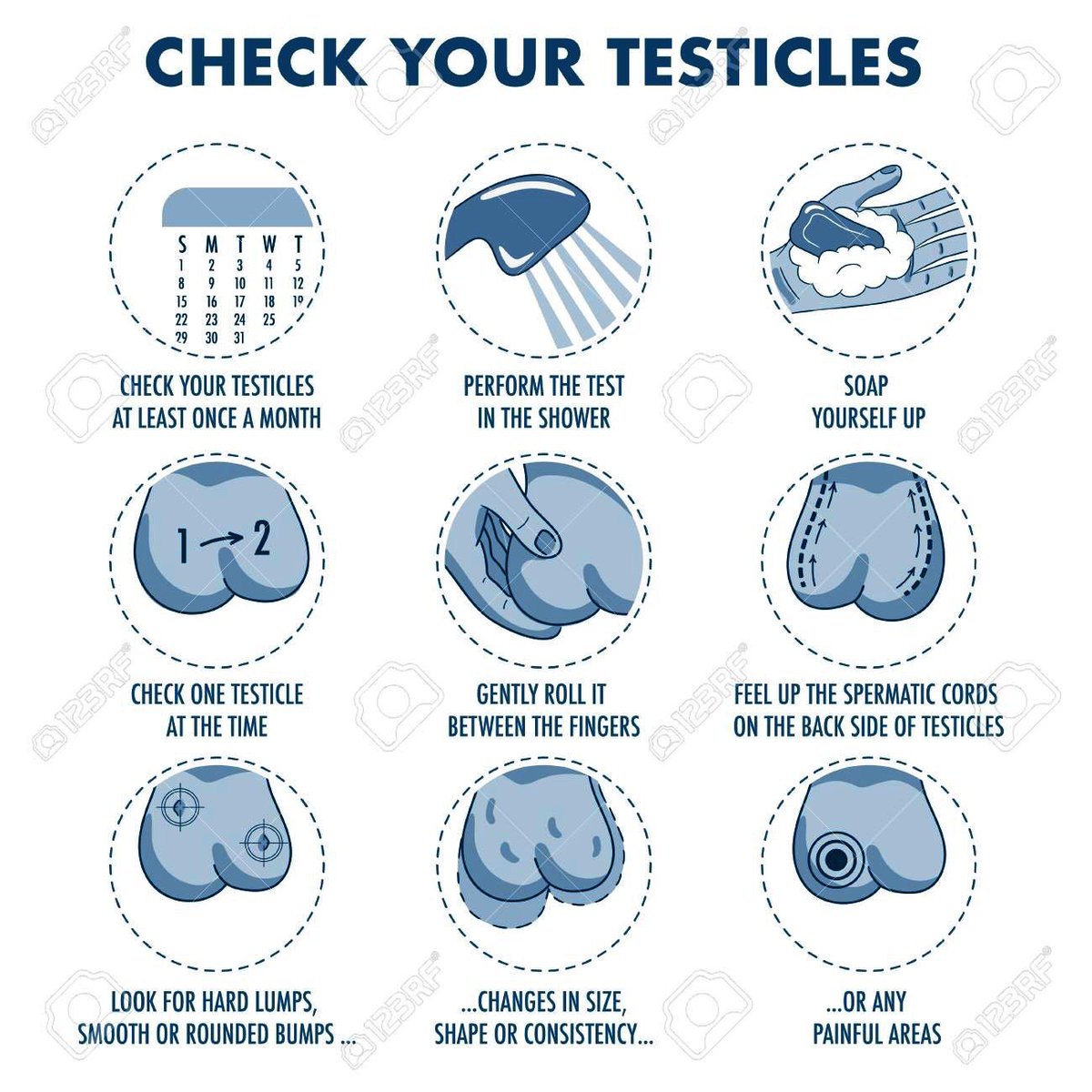 Possible complications include:
Possible complications include:
- A collection of pus due to infection (an abscess) occasionally develops in the scrotum. This may need a small operation to drain the pus.
- Reduced fertility in the affected testicle (testis), especially in cases caused by the mumps virus.
- An ongoing (chronic) inflammation occasionally develops.
- Rarely, serious damage to the testicle may occur and result in dead tissue (gangrene) in the testicle that needs to be surgically removed.
Epididymitis – StatPearls – NCBI Bookshelf
Continuing Education Activity
Epididymitis is an inflammation of the epididymis, a tubular structure on the testis where sperms mature. Epididymitis is a relatively common condition that is easily be confused with testicular torsion. Epididymitis is managed medically, whereas testicular torsion is a surgical emergency. This activity reviews the presentation, evaluation, and management of epididymitis and highlights the role of the interprofessional team in managing patients with this condition./testicular-cancer-symptoms1-5b2190e41d64040037c9891a.png)
Objectives:
Identify the etiology of epididymitis.
Summarize the presentation of acute epididymitis.
Explain the management of acute epididymitis.
Describe interprofessional team strategies for improving care coordination and communication to advance the treatment of epididymitis and optimize patient outcomes.
Access free multiple choice questions on this topic.
Introduction
The epididymis is part of the genitourinary tract that includes the testes, the vas deferens, the prostate, the urethra, and the bladder. Epididymitis is an infection or inflammation of the epididymis, the tubular structure located on the posterior and superior aspect of the testis where sperms mature prior to ejaculation. Because of its proximity to the testis, any infectious or inflammatory process affecting the epididymis may spread to the testis itself, a condition known as epididymo-orchitis.[1][2][3]
Etiology
The majority of cases of epididymitis occur as a result of bacterial infection. The types of bacterial infection include common urinary pathogens as well as pathogens known to cause sexually transmitted disease. In most cases of epididymitis, infection occurs either as a result of the retrograde flow of urine, most commonly seen in elderly males, or as a result of a sexually transmitted disease, most often encountered in males ages 20 to 40. In males prior to sexual maturity, the most common cause of epididymitis is inflammation that occurs as a result of trauma or repetitive activities such as sports. The possibility of a sexually transmitted disease, however, must be considered even in males prior to sexual maturity due to the possibility of sexual abuse. Other possible causes of epididymitis include chemical, drug-induced, and viral infections.[4][2][5]
The types of bacterial infection include common urinary pathogens as well as pathogens known to cause sexually transmitted disease. In most cases of epididymitis, infection occurs either as a result of the retrograde flow of urine, most commonly seen in elderly males, or as a result of a sexually transmitted disease, most often encountered in males ages 20 to 40. In males prior to sexual maturity, the most common cause of epididymitis is inflammation that occurs as a result of trauma or repetitive activities such as sports. The possibility of a sexually transmitted disease, however, must be considered even in males prior to sexual maturity due to the possibility of sexual abuse. Other possible causes of epididymitis include chemical, drug-induced, and viral infections.[4][2][5]
Epidemiology
Epididymitis can occur in men of any age, though the majority of cases of epididymitis occurs in males ages 20 to 39 and are most often associated with a sexually transmitted disease. Chlamydia trachomatis and Neisseria gonorrhea account for approximately 50% of cases of epididymitis associated with chlamydia and gonorrhea in males less than 39 years of age. After 39 years of age, the most common etiologic agent responsible for epididymitis is Escherichia coli and other coliform bacteria found in the gastrointestinal tract. In males prior to sexual maturity, epididymitis may still be caused by bacterial infections, but it is more common that epididymitis occurs as a result of an inflammatory process, such as repetitive activities like sports (e.g., running, jumping). Though rare, chemical epididymitis may occur as a result of exercising or having sexual intercourse with a full bladder, resulting in a retrograde flow of urine. Also, epididymitis may occur as a result of certain medications, namely amiodarone used in the treatment of cardiac dysrhythmia. Lastly, viral infections, such as mumps virus, can result in epididymitis or epididymo-orchitis.
After 39 years of age, the most common etiologic agent responsible for epididymitis is Escherichia coli and other coliform bacteria found in the gastrointestinal tract. In males prior to sexual maturity, epididymitis may still be caused by bacterial infections, but it is more common that epididymitis occurs as a result of an inflammatory process, such as repetitive activities like sports (e.g., running, jumping). Though rare, chemical epididymitis may occur as a result of exercising or having sexual intercourse with a full bladder, resulting in a retrograde flow of urine. Also, epididymitis may occur as a result of certain medications, namely amiodarone used in the treatment of cardiac dysrhythmia. Lastly, viral infections, such as mumps virus, can result in epididymitis or epididymo-orchitis.
Epididymitis is the most common cause of acute scrotal pain in adults. More than 600,000 men are affected yearly in the United States.
Pathophysiology
Epididymitis most often occurs as a result of a bacterial infection.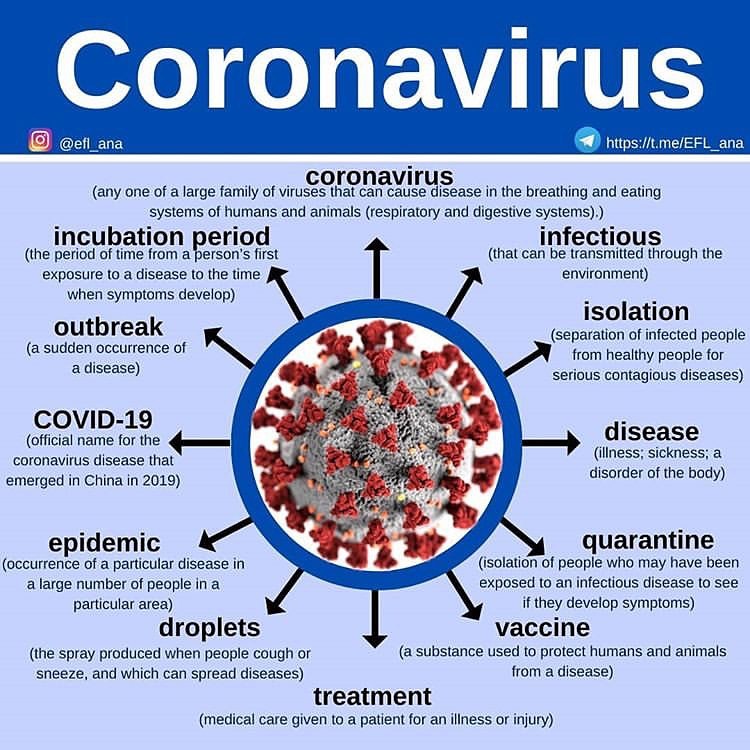 In the case of a sexually transmitted disease, bacteria are introduced during sexual intercourse and migrate through the genitourinary tract to the epididymis. In cases of infection due to urinary tract infection, retrograde flow of urine or stagnation of urine along the genitourinary tract results in infection of the epididymis. When epididymitis is caused by repetitive movements, the mobility of the scrotum and its contents can result in inflammation of the testes or the epididymis. Certain viruses, namely mumps virus, have a predisposition to infect the testis.
In the case of a sexually transmitted disease, bacteria are introduced during sexual intercourse and migrate through the genitourinary tract to the epididymis. In cases of infection due to urinary tract infection, retrograde flow of urine or stagnation of urine along the genitourinary tract results in infection of the epididymis. When epididymitis is caused by repetitive movements, the mobility of the scrotum and its contents can result in inflammation of the testes or the epididymis. Certain viruses, namely mumps virus, have a predisposition to infect the testis.
History and Physical
The patient will likely complain of scrotal pain and swelling, quite often gradual in onset rather than acute. It may begin with flank pain that migrates to the scrotum. The patient may also complain of urinary symptoms such as dysuria, urinary frequency, urgency, or incontinence of urine. The patient might also complain of urethral discharge. A careful history should include the possibility of traumatic injury or injury from repetitive activities such as sports, sexual history including history of prior sexually transmitted disease exposures, and past medical history including problems associated with the genitourinary tract such as prior urinary tract infection, prostatitis, or surgical procedures.
A physical exam will likely reveal swelling of the scrotum, and palpation of the scrotum will likely reveal tenderness of the scrotum, usually unilaterally but in some cases bilaterally. Tenderness to palpation of the epididymis along the posterior and superior aspect of the testis is the hallmark of epididymitis. Tenderness upon palpation of the testis itself may indicate the possibility of epididymo-orchitis or orchitis. The skin overlying the scrotum may appear warm, erythematous, inflamed, and indurated as a result of infection. Tender inguinal adenopathy may be present as well. Physical examination of the penis may demonstrate a urethral discharge. Digital rectal examination may demonstrate tenderness upon palpation of the prostate gland. These findings, while not necessarily indicative of epididymitis itself, might be present in infections of the male genitourinary tract.
Evaluation
Evaluation of the male patient with scrotal pain should begin with urinalysis. Though nonspecific, the presence of red blood cells and white blood cells in the urine may indicate an acute infectious or inflammatory condition. Urine should be cultured to determine the causative agent in cases associated with urinary tract infection. A urethral swab is indicated in cases where the sexually transmitted disease is considered likely given the patient’s sexual history. The radiographic evaluation includes ultrasonography with attention not only to the anatomic structure but also to assess vascular flow to the testis. Ultrasonography can demonstrate inflammation of the epididymis and testis in cases of epididymitis and epididymo-orchitis. Computerized tomography also may be of use in cases where the patient has flank pain and urinary symptoms associated with an acute genitourinary problem such as ureterolithiasis.[6][7][8]
Though nonspecific, the presence of red blood cells and white blood cells in the urine may indicate an acute infectious or inflammatory condition. Urine should be cultured to determine the causative agent in cases associated with urinary tract infection. A urethral swab is indicated in cases where the sexually transmitted disease is considered likely given the patient’s sexual history. The radiographic evaluation includes ultrasonography with attention not only to the anatomic structure but also to assess vascular flow to the testis. Ultrasonography can demonstrate inflammation of the epididymis and testis in cases of epididymitis and epididymo-orchitis. Computerized tomography also may be of use in cases where the patient has flank pain and urinary symptoms associated with an acute genitourinary problem such as ureterolithiasis.[6][7][8]
Of utmost importance is ruling out the possibility of testicular torsion as a cause of scrotal pain. While epididymitis tends to occur rather gradually, the pain associated with testicular torsion often occurs very abruptly.:max_bytes(150000):strip_icc()/cholera-overview-1958786_final-dd376d23599442c4b7ca41a219a8efe7.png) History alone, however, may not be sufficiently clear to exclude the possibility of testicular torsion as a result of acute scrotal pain without the aid of emergent urological consultation and ultrasonography.[9]
History alone, however, may not be sufficiently clear to exclude the possibility of testicular torsion as a result of acute scrotal pain without the aid of emergent urological consultation and ultrasonography.[9]
Treatment / Management
Treatment of epididymitis is based upon identification of the causative organism, though presumptive treatment may be initiated based upon the prevalence of the most typical agents (C. trachomatis, N. gonorrhea, E. coli). For suspected sexually transmitted cases, ceftriaxone along with doxycycline is recommended although azithromycin can be used as an alternative. Fluoroquinolones may be used in older patients where an enteric organism is suspected or likely. Pain and swelling can be dramatically reduced in many cases by using ice.[10][11][12]
Epididymitis caused by repetitive activity is treated symptomatically with rest, anti-inflammatory medications, scrotal support, and close primary care follow-up.
Differential Diagnosis
The differential diagnoses of epididymitis include but are not limited to the following:
Prognosis
Older age, previous history of diabetes mellitus, fever, higher white blood cell count, C-reactive protein level, and blood urea nitrogen level are independently associated with severity of epididymitis./tapeworms-diagnosis-5ae0a7fceb97de0037759743.png) [13] Patients with epididymitis secondary to a sexually transmitted disease have 2-5 times the risk of acquiring and transmitting HIV.[14] The outcomes for most men with epididymitis are excellent, but relapses may occur in patients who are not compliant with therapy.[15]
[13] Patients with epididymitis secondary to a sexually transmitted disease have 2-5 times the risk of acquiring and transmitting HIV.[14] The outcomes for most men with epididymitis are excellent, but relapses may occur in patients who are not compliant with therapy.[15]
Complications
Epididymitis if not treated properly or promptly can lead to the following complications:
Infection of the epididymis can lead to the formation of an epididymal abscess
Progression of the infection can lead to the involvement of the testicle, causing epididymo-orchitis or a testicular abscess
Sepsis is a potential consequence of severe infection
Bilateral epididymitis may result in sterility due to occlusion of the ductules from peritubular fibrosis
Deterrence and Patient Education
Patients with epididymitis caused by the sexually transmitted disease should refrain from sexual intercourse until asymptomatic, should consider safe sex practices to reduce the chance of re-infection, and should refer sexual contacts to their primary care provider or to their local health department for evaluation and treatment. Patients with epididymitis caused by urinary tract infection should be encouraged to drink plenty of fluids to flush the genitourinary tract, should be advised to take the entire course of antibiotics as prescribed, and should follow up with both their primary care provider and with a urologist for further evaluation and management. When the provider entertains the possibility of sexual abuse, he or she should contact local authorities, child protective services, or other social service agencies based upon laws, policies, and procedures of that jurisdiction.
Patients with epididymitis caused by urinary tract infection should be encouraged to drink plenty of fluids to flush the genitourinary tract, should be advised to take the entire course of antibiotics as prescribed, and should follow up with both their primary care provider and with a urologist for further evaluation and management. When the provider entertains the possibility of sexual abuse, he or she should contact local authorities, child protective services, or other social service agencies based upon laws, policies, and procedures of that jurisdiction.
Enhancing Healthcare Team Outcomes
Epididymitis is a frequent presentation to the emergency department. However, the diagnosis can often be confused with testicular torsion, which is a surgical emergency. The emergency department provider, nurse practitioner, and internist who encounter patients with testicular pain should consult with a urologist if there is any doubt about the diagnosis.
Patients with epididymitis should be educated about safe sex practice. In addition, these patients should be encouraged to drink plenty of fluids to flush the genitourinary tract and be compliant with antibiotic therapy.
In addition, these patients should be encouraged to drink plenty of fluids to flush the genitourinary tract and be compliant with antibiotic therapy.
The outcomes for most men with epididymitis are excellent, but relapses may occur in patients who are not compliant with therapy.[15]
References
- 1.
- Liu W, Li YY, Shang XJ. [Mycoplasma genitalium and male urogenital diseases: An update]. Zhonghua Nan Ke Xue. 2018 Jul;24(7):645-650. [PubMed: 30173450]
- 2.
- Louette A, Krahn J, Caine V, Ha S, Lau TTY, Singh AE. Treatment of Acute Epididymitis: A Systematic Review and Discussion of the Implications for Treatment Based on Etiology. Sex Transm Dis. 2018 Dec;45(12):e104-e108. [PubMed: 30044339]
- 3.
- Shigemura K, Kitagawa K, Nomi M, Yanagiuchi A, Sengoku A, Fujisawa M. Risk factors for febrile genito-urinary infection in the catheterized patients by with spinal cord injury-associated chronic neurogenic lower urinary tract dysfunction evaluated by urodynamic study and cystography: a retrospective study.
 World J Urol. 2020 Mar;38(3):733-740. [PubMed: 30949801]
World J Urol. 2020 Mar;38(3):733-740. [PubMed: 30949801] - 4.
- Agrawal V, Ranjan R. Scrotal abscess consequent on syphilitic epididymo-orchitis. Trop Doct. 2019 Jan;49(1):45-47. [PubMed: 30394857]
- 5.
- Agrawal V, Jha AK, Dahiya D. Clinical, radiological, cytological, and microbiological assessment of painful extratesticular lesions. Urol Ann. 2018 Apr-Jun;10(2):181-184. [PMC free article: PMC5907328] [PubMed: 29719331]
- 6.
- Bandarkar AN, Blask AR. Testicular torsion with preserved flow: key sonographic features and value-added approach to diagnosis. Pediatr Radiol. 2018 May;48(5):735-744. [PMC free article: PMC5895684] [PubMed: 29468365]
- 7.
- Ryan L, Daly P, Cullen I, Doyle M. Epididymo-orchitis caused by enteric organisms in men > 35 years old: beyond fluoroquinolones. Eur J Clin Microbiol Infect Dis. 2018 Jun;37(6):1001-1008. [PubMed: 29450767]
- 8.
- Tan WP, Levine LA. What Can We Do for Chronic Scrotal Content Pain? World J Mens Health.
 2017 Dec;35(3):146-155. [PMC free article: PMC5746485] [PubMed: 29282906]
2017 Dec;35(3):146-155. [PMC free article: PMC5746485] [PubMed: 29282906] - 9.
- Fonseca EKUN, Tomazoni D, Enge Júnior DJ, do Amaral E Castro A. Inferno sign in epididymo-orchitis. Abdom Radiol (NY). 2017 Dec;42(12):2955-2956. [PubMed: 28647767]
- 10.
- Bodie M, Gale-Rowe M, Alexandre S, Auguste U, Tomas K, Martin I. Addressing the rising rates of gonorrhea and drug-resistant gonorrhea: There is no time like the present. Can Commun Dis Rep. 2019 Feb 07;45(2-3):54-62. [PMC free article: PMC6461120] [PubMed: 31015819]
- 11.
- Yamamichi F, Shigemura K, Arakawa S, Fujisawa M. What are the differences between older and younger patients with epididymitis? Investig Clin Urol. 2017 May;58(3):205-209. [PMC free article: PMC5419104] [PubMed: 28480347]
- 12.
- Janier M, Dupin N, Derancourt C, Caumes E, Timsit FJ, Méria P., la section MST de la SFD. [Epididymo-orchitis]. Ann Dermatol Venereol. 2016 Nov;143(11):765-766. [PubMed: 27773505]
- 13.

- Hongo H, Kikuchi E, Matsumoto K, Yazawa S, Kanao K, Kosaka T, Mizuno R, Miyajima A, Saito S, Oya M. Novel algorithm for management of acute epididymitis. Int J Urol. 2017 Jan;24(1):82-87. [PubMed: 27714879]
- 14.
- Nusbaum MR, Wallace RR, Slatt LM, Kondrad EC. Sexually transmitted infections and increased risk of co-infection with human immunodeficiency virus. J Am Osteopath Assoc. 2004 Dec;104(12):527-35. [PubMed: 15653780]
- 15.
- Lampejo T, Abdulcadir M, Day S. Retrospective review of the management of epididymo-orchitis in a London-based level 3 sexual health clinic: an audit of clinical practice. Int J STD AIDS. 2017 Sep;28(10):1038-1040. [PubMed: 28201951]
Epididymo-orchitis – sexualwellbeing.ie
What is epididymo-orchitis?
Epidiymo-orchitis is a condition that affects men and is characterised by pain and swelling inside the scrotum (ball bag).
It is due to an infection either in the:
- epididymis – tube carrying the sperm from the testicle to the urethra (the tube through which you pass urine)
- testicle
- epididymis and testicle
An infection of the epididymis is called epididymitis.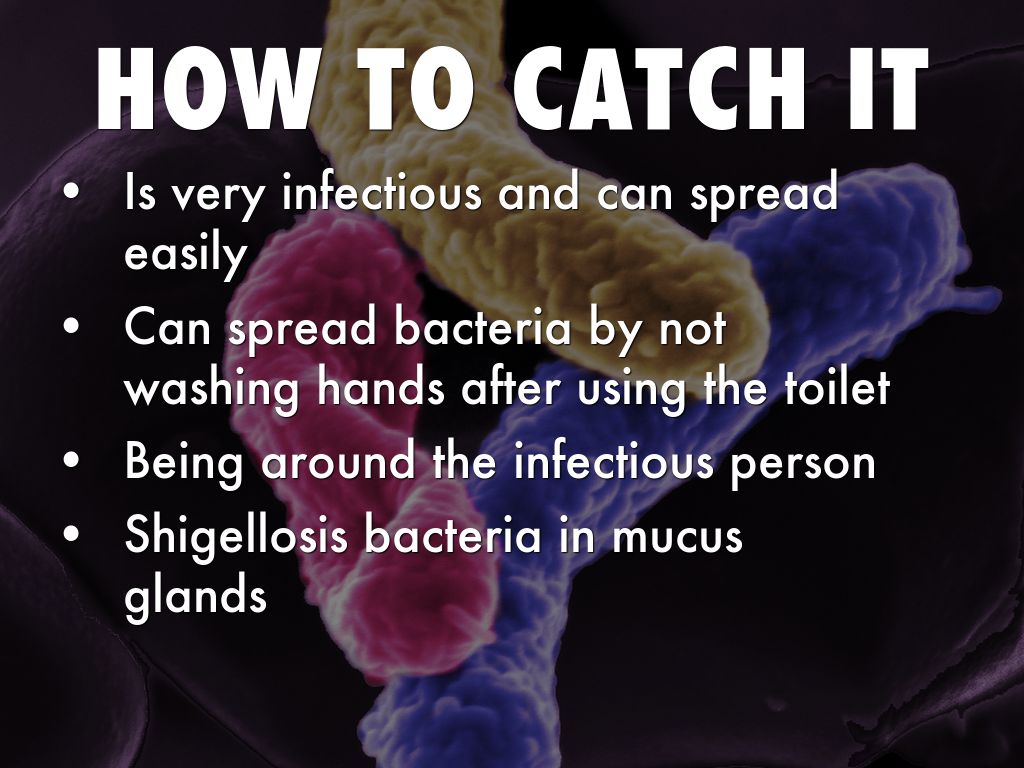 An infection of the testicle is called orchitis. An infection of both the epididymis and the testicle is called epididymo-orchitis.
An infection of the testicle is called orchitis. An infection of both the epididymis and the testicle is called epididymo-orchitis.
An immediate examination is needed to make sure you don’t have a twisted testicle (testicular torsion) as this can result in long-term damage to the testicle if not dealt with quickly.
Epidiymo-orchitis is easily treated with antibiotics, painkillers and rest, but the pain can take weeks to months to completely go away.
How common is epididymo-orchitis?
Epididymo-orchitis occurs most commonly in men aged 19 to 40.
How do I get epididymo-orchitis?
In most men under the age of 35, epididymo-orchitis is caused by a sexually transmitted infection (STI) such as chlamydia or gonorrhoea.
In most men over the age of 35, epididymo-orchitis is caused by the same bacteria that cause urinary tract infections.
This may also occur after surgical procedures such as cystoscopy or catheterisation.
Occasionally it may be caused by a ‘gut’ bacterial infection from insertive anal intercourse.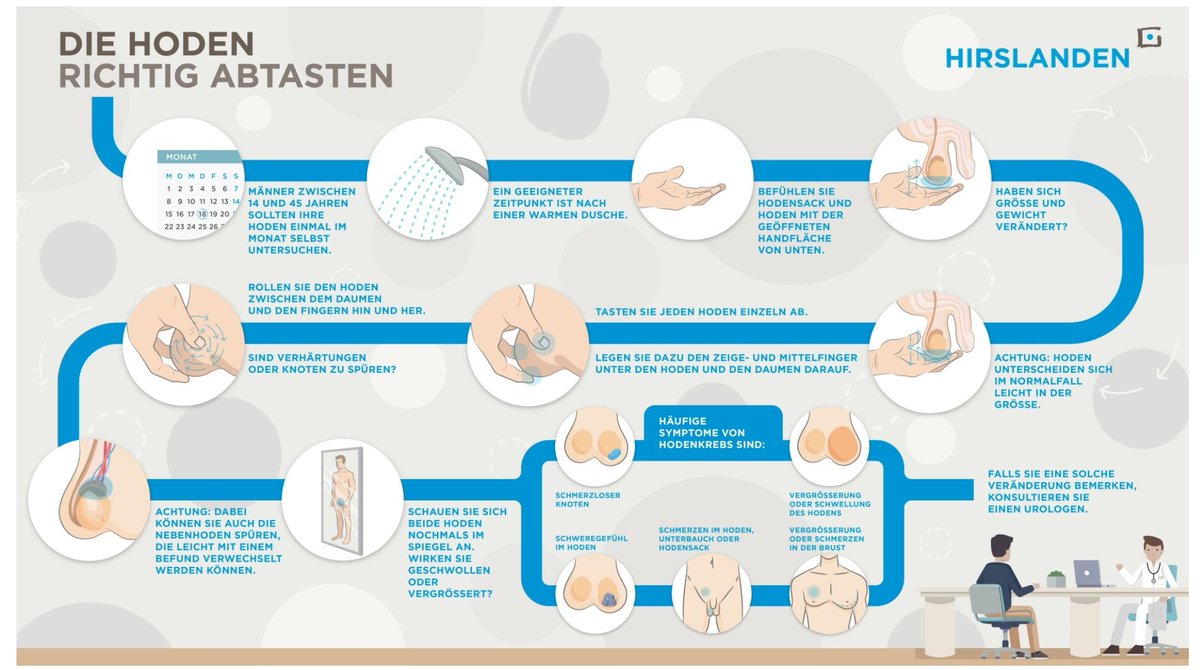
Rarely, it may be caused by other infections such as mumps or tuberculosis.
What symptoms would I have with epididymo-orchitis?
Pain and swelling in one or sometimes both of your testicles that comes on suddenly.
Sometimes you may notice a discharge from the tip of the penis and/or pain on passing urine.
Occasionally you may feel generally unwell with a fever.
How can I be tested for epididymo-orchitis?
Epididymo-orchitis is diagnosed based on your symptoms and what the doctor or nurse finds when they examine you.
If there is any concern that you may have a twisted testicle (testicular torsion), you will be referred for further tests and examination.
If you have epididymo-orchitis, you will likely be asked to give a urine sample and recommended to have a sexual health screen (this tests for routine sexually transmitted infections including chlamydia, gonorrhoea, syphilis and HIV). This will help to find out what may have caused your infection.
How is epididymo-orchitis treated?
Epididymo-orchitis is treated with antibiotics to cover the most likely infections. This may include an injection as well as tablet treatment.
You will be advised to rest, wear a scrotal (ball bag) support and take regular painkillers (for example ibuprofen or paracetamol).
If your symptoms get worse or do not improve within 3 days, you should go back to your doctor or nurse, or seek further medical advice.
Testicular pain and swelling often takes many weeks or months to fully settle after treatment.
What about my partner?
If you have been diagnosed with an STI, it is important that all of the people you have recently been in sexual contact with are given the option to be tested and treated. Your doctor or nurse will discuss this with you.
When can I have sex again?
You will have to wait until you have finished the antibiotics and have had a check-up by your doctor before having sex again, even sex with a condom or oral sex.
If you were diagnosed with an STI, it is really important that you don’t have sex with your partner before they are tested and treated as you could become infected again.
What happens if my epididymo-orchitis is left untreated?
If you do not get treatment, the testicular pain and swelling will last much longer.
An untreated infection is more likely to lead to complications such as long-term testicular pain or an abscess. In rare cases, untreated infection can lead to shrinkage of the testicle and loss of fertility.
Download the Epididymo-orchitis leaflet here.
Epididymitis | Urology Associates | Denver
Epididymitis at a glance
- Epididymitis is a bacterial infection in the epididymis, a thin tube located in the back of the testicle that stores and transports semen.
- Men with epididymitis may experience painful urination or intercourse, as well as blood in the urine or semen.
- Causes of epididymitis include bacterial buildup (E.
 coli for example) in the urethra that travels to the testicles and sexually transmitted infections (STIs) such as gonorrhea and chlamydia.
coli for example) in the urethra that travels to the testicles and sexually transmitted infections (STIs) such as gonorrhea and chlamydia. - Acute epididymitis is curable and typically treated with antibiotics, while treatment for chronic versions attempts to reduce overall discomfort during outbreaks.
What is epididymitis?
Epididymitis is a common inflammatory condition of the epididymis, a coiled tube located in the back portion of the testicle. The epididymis is responsible for transporting and storing maturing sperm.
Men can have either acute or chronic versions of epididymitis. Acute epididymitis is signaled by sudden and severe symptoms. A case of epididymitis that persists for more than six weeks is considered chronic. Acute epididymitis may turn chronic when the specific cause of the infection is unknown and consequently left untreated. Chronic epididymitis, unlike acute, is not completely curable, but can be managed symptomatically.
If left untreated, epididymitis may cause an abscess, also known as a puss pocket, on the scrotum or even destroy the epididymis, which can lead to infertility.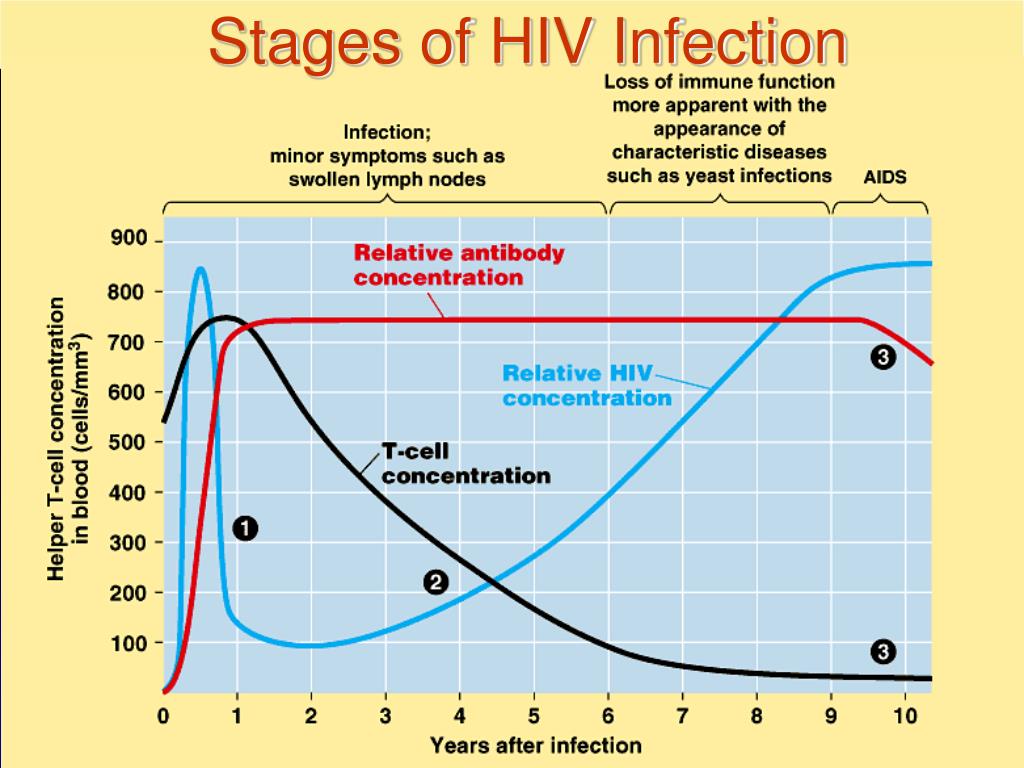 As with any infection left untreated, epididymitis may spread into another body system and, in rare cases, even cause death.
As with any infection left untreated, epididymitis may spread into another body system and, in rare cases, even cause death.
Causes of epididymitis
Sexually transmitted bacterial infections, such as gonorrhea or chlamydia, are the most common causes of epididymitis in sexually active men. Sometimes an inflamed testicle (known as epididymo-orchiti) that is not the result of an STI may cause epididymitis. The medication amiodarone has been linked to increased scrotal inflammation, which can result in epididymitis.
In young, non-sexually active boys, epididymitis may be caused by urinary tract infections or a bladder or kidney infection that finds its way to the testicles and results in epididymitis. Any injury or trauma to the groin area may also cause epididymitis. In rare cases, the root cause of epididymitis is unidentifiable.
Symptoms of epididymitis
Men who experience pain in their testicles or scrotum may have epididymitis and should visit a urologist as soon as possible to rule out other conditions, such as testicular torsion./syphilis-09-5ac64896ba61770037c0fd34.png)
Other symptoms of epididymitis may include:
- Asymmetrical testicular pain or tenderness
- Painful and frequent urination
- Swollen, warm or red colored scrotum
- Uncomfortable intercourse
- Blood in the semen.
Typically in chronic epididymitis, the pain occurs mostly in the scrotum and is less severe than the acute version.
Treating epididymitis
Treating epididymitis as soon as it is discovered is imperative, as it will not clear up on its own. Standard treatment for acute epididymitis includes a two-week dose of antibiotics. Scrotum tenderness may take a few weeks after taking medication to completely vanish. In patients with chronic epididymitis, pain medication is typically used to treat the symptoms.
Surgery for epididymitis
In rare cases, an abscess may form on the scrotum that requires surgical removal. During surgery all or part of the epididymis may need to be removed, which is also referred to as an epididymectomy.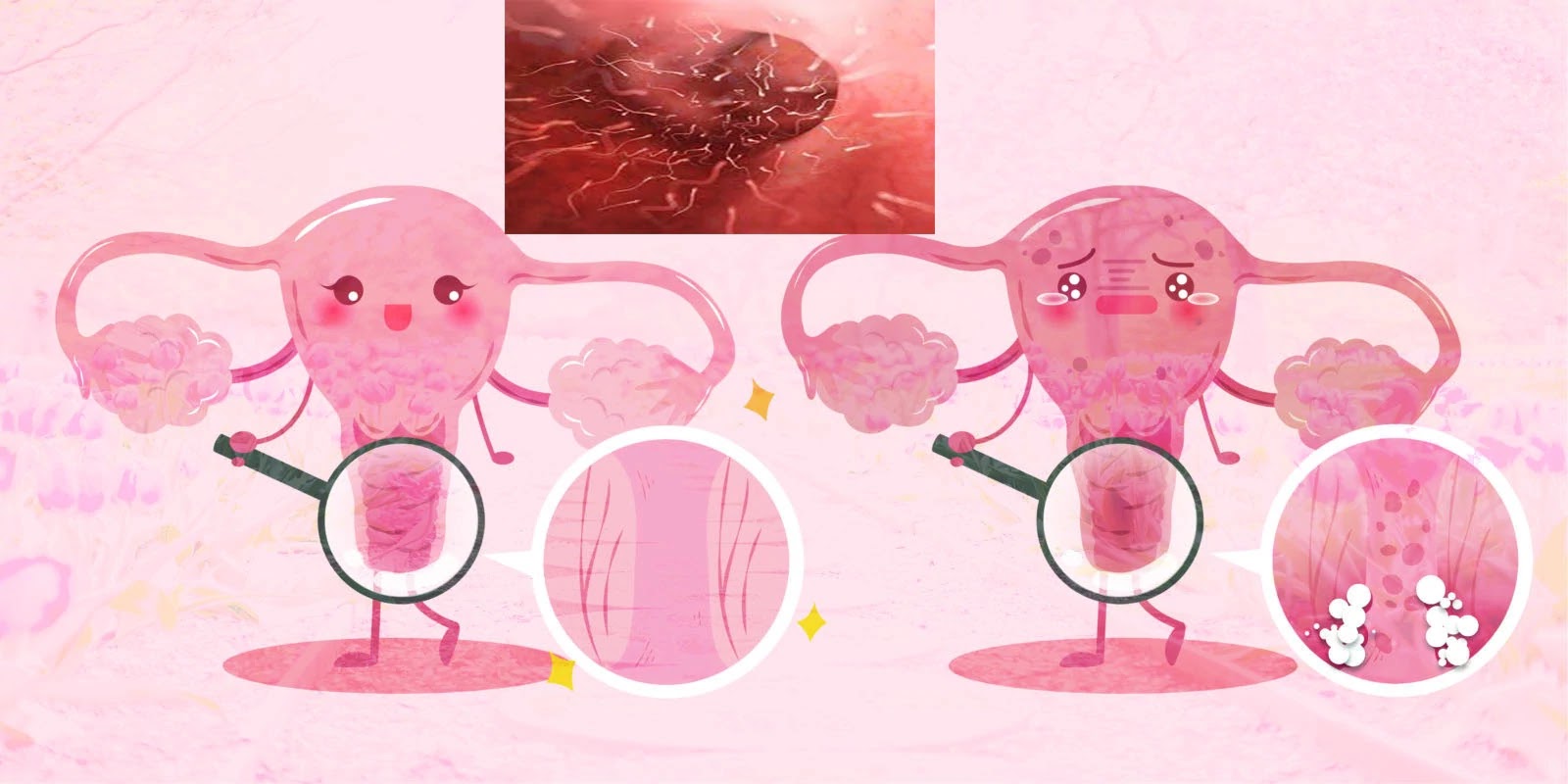 Surgery may be considered if the patient’s epididymitis is due to underlying physical malformation.
Surgery may be considered if the patient’s epididymitis is due to underlying physical malformation.
Testicular Cancer Signs and Symptoms
Many of these symptoms are more likely to be caused by something other than testicular cancer.
A number of non-cancerous conditions, such as testicle injury or inflammation, can cause symptoms a lot like those of testicular cancer. Inflammation of the testicle (known as orchitis) and inflammation of the epididymis (epididymitis) can cause swelling and pain of the testicle. Both of these also can be caused by viral or bacterial infections.
Some men with testicular cancer have no symptoms at all, and their cancer is found during medical testing for other conditions. For instance, sometimes imaging tests done to find the cause of infertility can uncover a small testicular cancer.
But if you have any of these signs or symptoms, see your doctor right away.
Lump or swelling in the testicle
Most often, the first symptom of testicular cancer is a lump on the testicle, or the testicle becomes swollen or larger. (It’s normal for one testicle to be slightly larger than the other, and for one to hang lower than the other.) Some testicular tumors might cause pain, but most of the time they don’t. Men with testicular cancer can also have a feeling of heaviness or aching in the lower belly (abdomen) or scrotum.
(It’s normal for one testicle to be slightly larger than the other, and for one to hang lower than the other.) Some testicular tumors might cause pain, but most of the time they don’t. Men with testicular cancer can also have a feeling of heaviness or aching in the lower belly (abdomen) or scrotum.
Breast growth or soreness
In rare cases, germ cell tumors can make breasts grow or become sore. This happens because certain types of germ cell tumors secrete high levels of a hormone called human chorionic gonadotropin (HCG), which stimulates breast development.
Some Leydig cell tumors can make estrogens (female sex hormones), which can cause breast growth or loss of sexual desire.
Early puberty in boys
Some Leydig cell tumors can make androgens (male sex hormones). Androgen-producing tumors may not cause any symptoms in men, but in boys they can cause signs of puberty at an abnormally early age, such as a deepening voice and the growth of facial and body hair.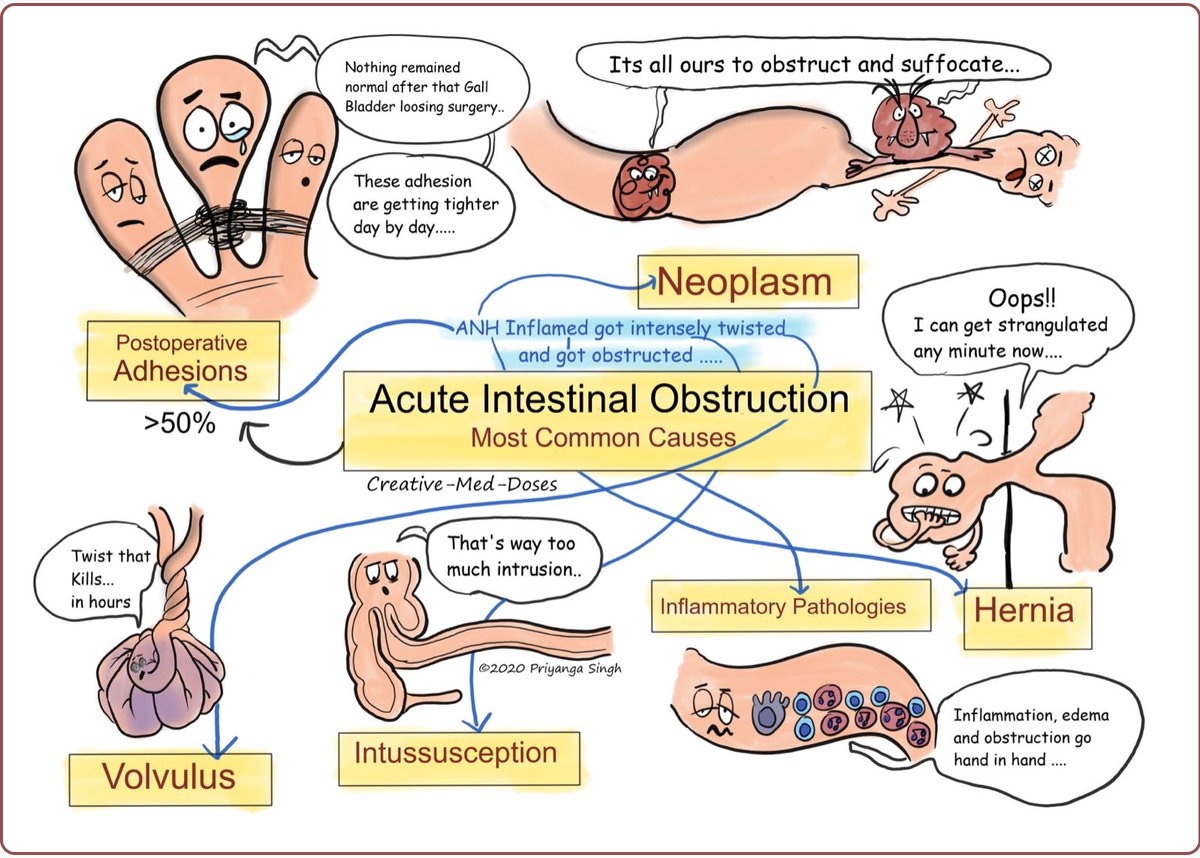
Symptoms of advanced testicular cancer
Even if testicular cancer has spread to other parts of the body, many men might not have symptoms right away. But some men might have some of the following:
- Low back pain, from cancer spread to the lymph nodes
(bean-sized collections of immune cells) in back of the belly. - Shortness of breath, chest pain, or a cough (even coughing up blood) may develop from cancer spread in the lungs.
- Belly pain, either from enlarged lymph nodes or because the cancer has spread to the liver.
- Headaches or confusion, from cancer spread in the brain.
Epididymitis | Michigan Medicine
Topic Overview
What is epididymitis?
The epididymis is a long, tightly coiled tube that lies above and behind each testicle. It collects and stores maturing sperm made by the testicles prior to ejaculation. Inflammation and infection of the epididymis is called epididymitis.
Inflammation and infection of the epididymis is called epididymitis.
What causes epididymitis?
The causes of epididymitis vary depending on your age and behavior. In children it is most commonly associated with urinary tract infections. In young, sexually active men, it is often linked to sexually transmitted infection. And in older men it is often caused by enlargement of the prostate gland. Bacterial infections, possibly spread from the rectal area or following a urological procedure, also may cause epididymitis. And an injury to the groin may cause epididymitis.
What are the symptoms?
Pain, tenderness, and swelling in the scrotum (epididymides or testicles) that gradually get worse are the most common symptoms of epididymitis. Other symptoms may include fever and chills, frequent or painful urination, or a discharge from the penis.
How is epididymitis diagnosed?
Epididymitis is diagnosed using a physical exam and a medical history.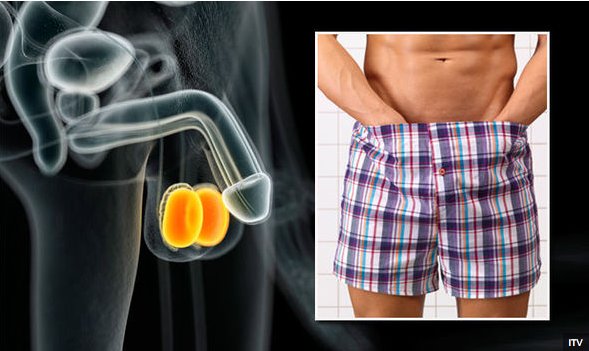 A culture of discharge from the penis is done to check for a bacterial infection, such as a sexually transmitted infection. And a urinalysis and urine culture are done to check for a urinary tract infection. You may also have a blood test to check for an elevated white cell count and an ultrasound or nuclear medicine test to make sure that you do not have torsion of the testicle, an emergency condition that causes loss of blood flow to the testicles and requires urgent surgical treatment. These tests are also used to make sure that you do not have a tumor.
A culture of discharge from the penis is done to check for a bacterial infection, such as a sexually transmitted infection. And a urinalysis and urine culture are done to check for a urinary tract infection. You may also have a blood test to check for an elevated white cell count and an ultrasound or nuclear medicine test to make sure that you do not have torsion of the testicle, an emergency condition that causes loss of blood flow to the testicles and requires urgent surgical treatment. These tests are also used to make sure that you do not have a tumor.
How is it treated?
If your doctor thinks it may be caused by a bacteria, he or she will treat you with antibiotics. Supportive measures, such as bed rest with elevation of the hips and anti-inflammatory medicines (such as ibuprofen or ketoprofen), may help relieve discomfort caused by epididymitis.
If you have symptoms of epididymitis, reduce the risk of spreading a possible infection to your partner by avoiding sexual intercourse until you can be examined by your doctor.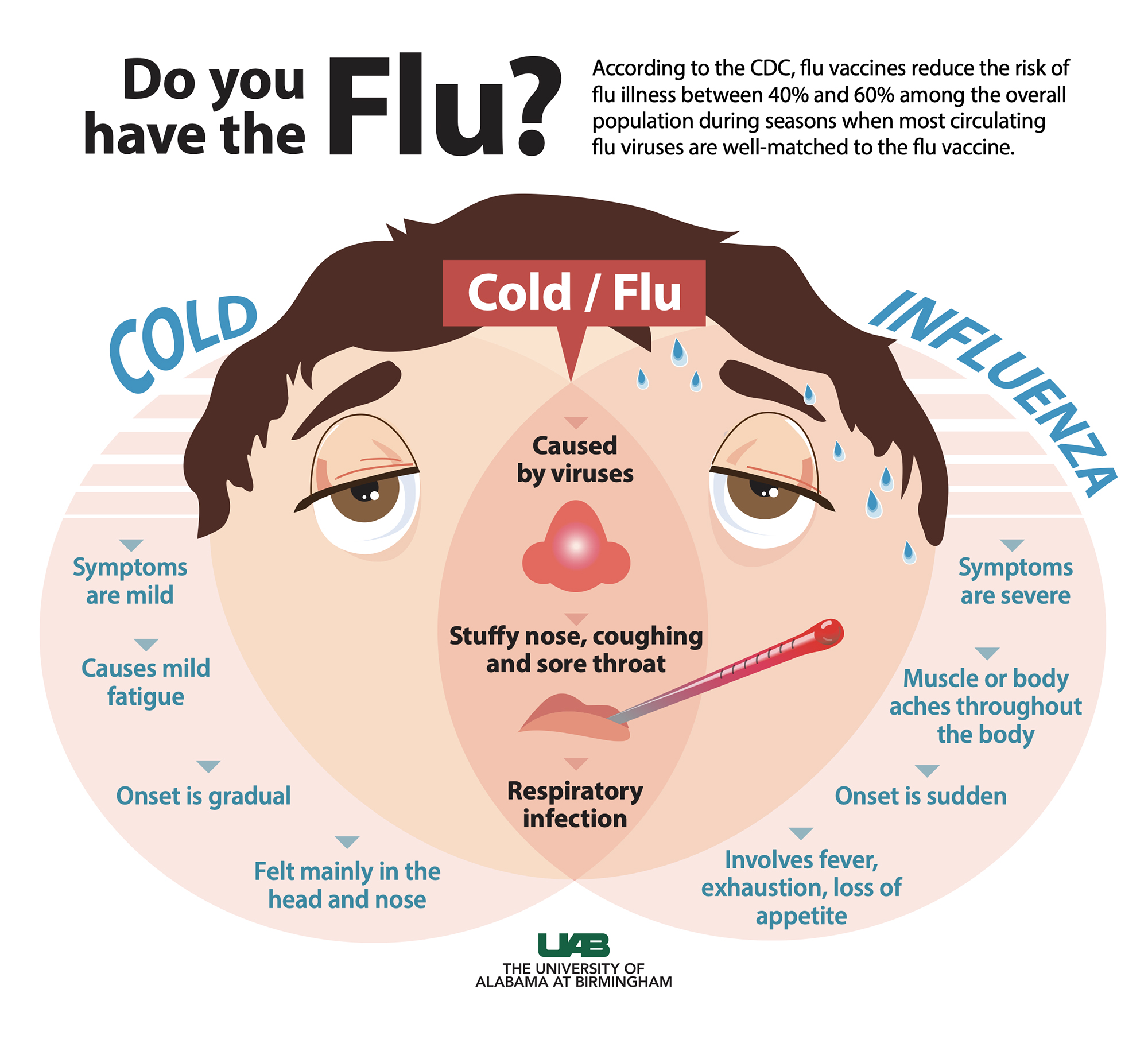 It is important for sex partners to be evaluated and treated for a possible infection.
It is important for sex partners to be evaluated and treated for a possible infection.
References
Other Works Consulted
- Nguyen HT (2008). Bacterial infections of the genitourinary tract. In EA Tanagho, JW McAninch, eds., Smith’s General Urology, 17th ed., pp. 193–218. New York: McGraw-Hill Medical.
Credits
Current as of:
February 11, 2020
Author: Healthwise Staff
Medical Review:
E. Gregory Thompson MD – Internal Medicine
Adam Husney MD – Family Medicine
Christopher G. Wood MD, FACS – Urology, Oncology
Current as of: February 11, 2020
Author:
Healthwise Staff
Medical Review:E. Gregory Thompson MD – Internal Medicine & Adam Husney MD – Family Medicine & Christopher G. Wood MD, FACS – Urology, Oncology
Gregory Thompson MD – Internal Medicine & Adam Husney MD – Family Medicine & Christopher G. Wood MD, FACS – Urology, Oncology
Medical Center Axon
Orchitis – testicular inflammation . It is almost always a complication of an infectious and inflammatory disease. It develops more often in inflammatory diseases of the genitourinary system – urethritis, prostatitis, vesiculitis, epididymitis. Orchitis can also appear due to testicular injury. In its course, orchitis is acute and chronic. The disease begins with the appearance of pain in the testicle. Pain can radiate to the groin, perineum, lower back, sacrum.The scrotum on the side of the disease increases 2 times or more, the skin becomes smooth, a few days after the onset of the disease, it turns red sharply, becomes hot, and can acquire a glossy shade. The inflamed testicle is enlarged, sharply painful when touched. Simultaneously with pain in the scrotum, general symptoms of inflammation appear – weakness, fever, chills, headache, nausea.
Uncomplicated orchitis is treated conservatively, antibiotics and anti-inflammatory drugs are used, physiotherapy also gives a good effect, but it cannot replace antibacterial drugs.In severe cases, hormonal drugs are prescribed.
Treatment of orchitis must be timely and comprehensive, otherwise, the process may become chronic, and even worse, the so-called self-resorption of the testicle may occur. In some cases, the inflammatory process in the testicle leads to its suppuration, the development of a testicular abscess. At the same time, the skin of the scrotum becomes bright red, smooth, sharply painful when touched. When a testicular abscess develops, it is opened and drained.In severe cases, with complete fusion of testicular tissue with pus, orchiectomy is performed – unilateral removal of the testicle.
Chronic orchitis develops with improper or insufficient treatment of acute orchitis or as a complication of chronic inflammatory diseases of the genitourinary system.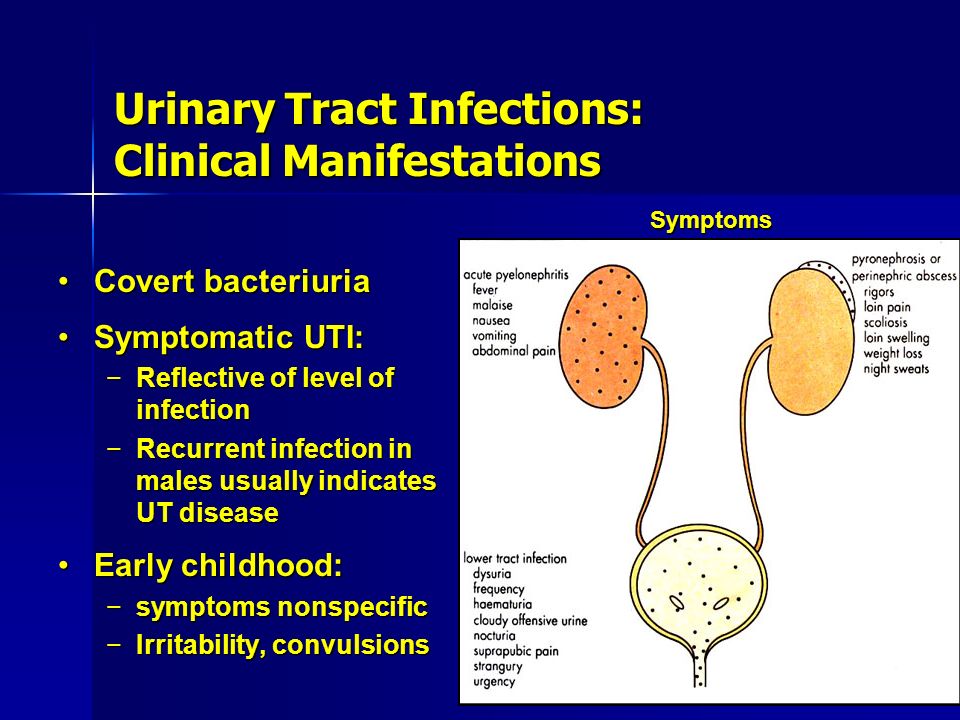 More often than acute, it leads to a decrease in the secretory function of the testicle and can cause infertility. Treatment of chronic orchitis is long and laborious. A course of antibacterial drugs is being taken, local thermal and physiotherapeutic procedures are actively used.Prevention of orchitis is reduced to the treatment of chronic inflammatory diseases of the genitourinary organs, careful monitoring of your condition during general infectious diseases.
More often than acute, it leads to a decrease in the secretory function of the testicle and can cause infertility. Treatment of chronic orchitis is long and laborious. A course of antibacterial drugs is being taken, local thermal and physiotherapeutic procedures are actively used.Prevention of orchitis is reduced to the treatment of chronic inflammatory diseases of the genitourinary organs, careful monitoring of your condition during general infectious diseases.
Epididymitis – inflammation of the epididymis. The causes of epididymitis are the same as for orchitis. In addition, some sexually transmitted infections can contribute to inflammation of the epididymis. There is a pronounced swelling of the scrotum and an increase in the epididymis. The testicle itself can remain non-enlarged and painless.Treatment of acute epididymitis consists in prescribing antibacterial, anti-inflammatory drugs, creating rest for the organs of the scrotum (wearing a suspensor), prescribing physiotherapy and resorption therapy. Treatment of uncomplicated epididymitis is carried out by a doctor on an outpatient basis, in exceptional cases, surgical intervention is required. With proper treatment, these diseases disappear within 2 weeks.
Treatment of uncomplicated epididymitis is carried out by a doctor on an outpatient basis, in exceptional cases, surgical intervention is required. With proper treatment, these diseases disappear within 2 weeks.
Orchoepididymitis – simultaneous inflammation of the testicle and its epididymis .
Chronic and recurrent epididymitis, orchiepididymitis and orchitis are manifested by less pronounced enlargement and more local compaction of the scrotal organs, the pain is less intense and paroxysmal, the body temperature is usually normal.
Diagnostics
The basis for the diagnosis of diseases of the testicle, its epididymis and the spermatic cord is a physical examination (primarily palpation or feeling). The leading auxiliary methods are diaphanoscopy and ultrasound examination of the scrotum.All these methods are absolutely painless, and their correct use and proper interpretation make it possible to make an accurate diagnosis in the vast majority of cases.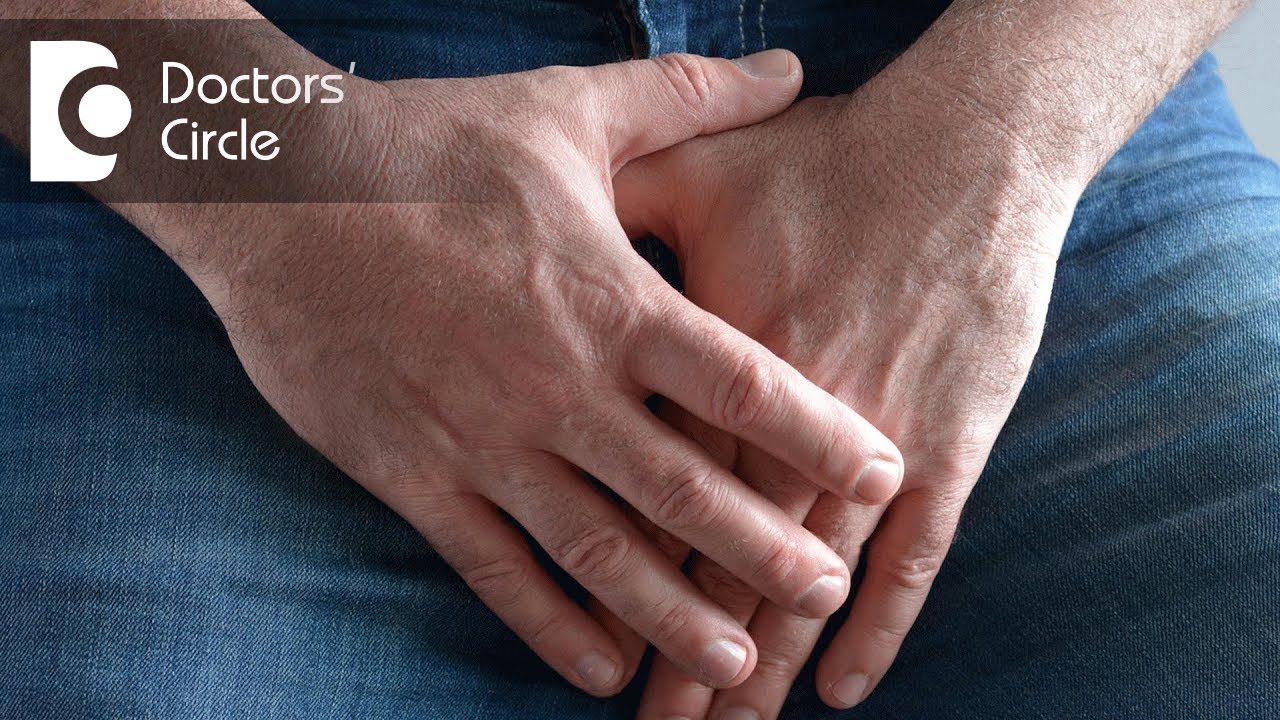 To establish the causes of epididymitis, orchitis and orchiepididymitis, a general analysis and urine culture for microflora are required, sometimes semen (ejaculate) is analyzed for the presence of various infections in it. If a testicular tumor is suspected, blood tests are performed for appropriate tumor markers. Only a properly constructed complex of diagnostic measures allows you to establish an accurate diagnosis and carry out the most effective treatment.
To establish the causes of epididymitis, orchitis and orchiepididymitis, a general analysis and urine culture for microflora are required, sometimes semen (ejaculate) is analyzed for the presence of various infections in it. If a testicular tumor is suspected, blood tests are performed for appropriate tumor markers. Only a properly constructed complex of diagnostic measures allows you to establish an accurate diagnosis and carry out the most effective treatment.
Treatment
Treatment of epididymitis, orchitis, orchiepididymitis and deferentitis is carried out primarily with antibiotics, since their main cause is various infections. The choice of an antibiotic for an acute inflammatory process is carried out empirically, taking into account the known age characteristics of causative infections. Upon receipt of the results of microbiological studies and analysis of the sensitivity of the isolated microflora to antibiotics, it is possible to adjust antibiotic therapy, change its duration, dosage of drugs, and sometimes the drugs themselves and their combinations. Together with antibiotics, non-steroidal anti-inflammatory drugs are prescribed in order to reduce inflammatory edema, pain and the fastest reverse development of inflammatory changes. For severe pain, spermatic cord blockade with local anesthetic is used, which significantly reduces pain. All patients are advised to wear tight panties (swimming trunks) that tighten the scrotum during treatment. This promotes better blood and lymph flow in the scrotum, accelerates the reverse development of inflammation.In the presence of abscesses or abscesses of the testicle and its epididymis, as well as in chronic recurrent epididymitis that is difficult to treat, in the case of testicular tuberculosis, surgical treatment is used.
Together with antibiotics, non-steroidal anti-inflammatory drugs are prescribed in order to reduce inflammatory edema, pain and the fastest reverse development of inflammatory changes. For severe pain, spermatic cord blockade with local anesthetic is used, which significantly reduces pain. All patients are advised to wear tight panties (swimming trunks) that tighten the scrotum during treatment. This promotes better blood and lymph flow in the scrotum, accelerates the reverse development of inflammation.In the presence of abscesses or abscesses of the testicle and its epididymis, as well as in chronic recurrent epididymitis that is difficult to treat, in the case of testicular tuberculosis, surgical treatment is used.
In acute inflammation of the testicle and epididymis, the patient should be kept on strict bed rest. The scrotum must be given an elevated position. During the day, apply cold compresses (ice bag) for 1 hour with a half hour break. From the first day, the patient undergoes a blockade of the spermatic cord with local anesthetics, antibiotics, anti-inflammatory drugs and medicinal compresses are prescribed. If after a few days the pain subsides, the temperature drops, then you can use drugs that absorb inflammatory seals, thermal physiotherapy until the inflammation is completely resorbed. With chronic inflammation of the scrotal organs, antibiotic therapy is also carried out, but taking into account bacteriological tests. Absorbent drugs and long-term physiotherapy are widely used. If conservative treatment is ineffective, an operation is performed – removal of the testicle or its epididymis.
If after a few days the pain subsides, the temperature drops, then you can use drugs that absorb inflammatory seals, thermal physiotherapy until the inflammation is completely resorbed. With chronic inflammation of the scrotal organs, antibiotic therapy is also carried out, but taking into account bacteriological tests. Absorbent drugs and long-term physiotherapy are widely used. If conservative treatment is ineffective, an operation is performed – removal of the testicle or its epididymis.
Treatment of inflammation of the epididymis and testicles in men in the Clinic on Shchukinskaya
Testicles and their appendages
Primary appointment with a urologist: 3000 rub.
Orchitis is an inflammation of the testicle in men. It is often a complication of an infectious and inflammatory disease. Inflammation of the testes in men or inflammation of the epididymis can also result from mumps, scarlet fever, influenza, pneumonia, chickenpox, typhoid fever, and even brucellosis.![]() Most often, orchitis develops as a result of inflammatory diseases of the genitourinary system, such as urethritis, prostatitis, vesiculitis, epididymitis. Orchitis can also be caused by testicular injury.
Most often, orchitis develops as a result of inflammatory diseases of the genitourinary system, such as urethritis, prostatitis, vesiculitis, epididymitis. Orchitis can also be caused by testicular injury.
Inflammation of the testicle in men, as well as inflammation of the epididymis, can be chronic and acute. Acute orchitis often occurs due to an acute inflammatory disease, respectively, chronic – caused by a chronic illness.
Course of acute orchitis
The main symptom of testicular inflammation is the occurrence of pain in it.Pain can sometimes radiate to the lower back, perineum, sacrum, groin. The affected scrotum increases by about 2 times or even more, while the skin becomes smooth. After several days after the onset of the disease, the skin on the affected scrotum turns red and becomes hot, in some cases it can acquire a glossy shade.
Simultaneously with pain in the scrotum, there are general symptoms indicating inflammation — fever with a temperature of 38–39 0 C, weakness, headache, chills, nausea.
Often, even without treatment, the disease subsides on its own in 2-4 weeks. But in some cases, the inflammatory process leads to suppuration of the testicle and the development of an abscess.
The main complication of acute orchitis is the development of a secretory form of infertility in the future.
Treatment of acute orchitis
With the development of suppuration, the patient is immediately hospitalized. Treatment of testicular inflammation is carried out in the same way as in the treatment of acute epididymitis.Such methods include: treatment of the disease that led to the appearance of orchitis, fixation of the elevated position of the scrotum, local use of cold, antibiotic therapy, thermal procedures, physiotherapy.
In case of development of inflammation of the epididymis, the testicle is drained.
Chronic orchitis
Chronic orchitis is a consequence of insufficient, incorrect treatment of acute orchitis. In the case of chronic orchitis, often the only symptom is testicular tenderness when touched.
Chronic orchitis is often the cause of decreased testicular secretory function and infertility.
In the treatment of chronic orchitis, attention is also paid to the underlying disease, a course of taking antibacterial drugs is carried out, physiotherapy and local thermal methods are used.
Prevention of orchitis
Prevention of orchitis consists in the timely treatment of testicular inflammation and inflammatory diseases of the genitourinary organs. It will not be superfluous to make it a rule to regularly monitor your health.
Orchitis in Sochi – clinic URO-PRO – treatment of urological diseases
In case of severe symptoms of this disease, treatment should not be delayed. Contact the medical center “URO-PRO” for highly qualified help from specialists.
Orchitis is a serious and dangerous disease that, if not properly treated or ignored, can lead to impotence and infertility. The disease is inflammatory in the testicle. It is extremely rare that primary orchitis occurs in newborns.However, in essence, orchitis acts as a complication of infectious diseases, for example, mumps. Orchitis can also develop against the background of influenza, scarlet fever, pneumonia, typhoid and diseases of the genitourinary system:
- urethritis;
- prostatitis;
- epididymitis;
- vesiculitis.
In the above cases, the infection enters the testicle through the blood or lymph. If the inflammation spreads to the epididymis, the patient may develop orchiepidymitis.
Orchitis usually develops as a result of injury or volvulus of the spermatic cord.
One of the factors in the development of this disease may be reduced immunity in prolonged chronic diseases, poisoning and hypovitaminosis.
Orchitis is divided by:
- Specific – caused by the presence of specific microorganisms (tuberculosis and syphilis). A characteristic picture is formed on the site of inflammation;
- Nonspecific – other microorganisms contribute to the development of nonspecific orchitis, i.e.That is, by its appearance, it is impossible to recognize which microorganism caused it.
- Acute – characterized by a sharp onset of pain in one testicle, radiating to the groin, lower back, perineum or inner thigh. There is an increased body temperature, a general inflammatory process in the body, for example, chills, weakness and sweating. The size of the testicle increases, the scrotum swells and becomes smooth. Some suppuration is possible, redness occurs on the skin of the scrotum, and pain in the testicle becomes more severe.
The attending physician uses ultrasound to detect the disease, and may also prescribe a DNA test of blood and urine to identify:
90,090 90,091 herpes viruses;
Orchitis of a non-specific nature should be distinguished from:
- inversion;
- tuberculosis;
- testicular tumors.
Treatment of acute orchitis
The patient is assigned to bed rest. To keep the testicle at rest, a pouch bandage should be used to immobilize the scrotum. The specialist prescribes a diet that excludes spicy, fried and fatty foods, and also recommends drinking a lot of water. Antibiotics are prescribed to treat the infection that caused the testicle to become inflamed. When the symptoms of acute pain subside, the patient begins physiotherapy using a laser.
With purulent orchitis, abscess opening and drainage is required.
Most often, treatment takes place without complications and brings fairly good results, however, some cases of bilateral orchitis in childhood and adolescence can result in infertility.
Chronic orchitis develops with improper or insufficient treatment of acute orchitis, as well as with chronic infectious diseases of the genitourinary system:
- epididymitis;
- urethritis;
- prostatitis.
Chronic orchitis is characterized by mild pain in the testicle and occasional pain in the scrotum when walking.
Treatment of orchitis is a rather lengthy process that requires a competent approach and properly prescribed medications.
Scrotal inflammation symptoms and treatment
Contents:
Male diseases
Symptoms of scrotal inflammation
Methods for treating scrotal inflammation
Prevention
Inflammatory processes of the scrotum are a number of specific “male” diseases.It all depends on the place or organ in which the inflammatory process develops. For example, epididymitis is an inflammation of the epididymis, and the focus of the disease in the testicle itself is called orchitis. When both the testicle and its epididymis become inflamed at the same time, the doctor diagnoses orchiepididymitis.
Occurs, inflammation of the spermatic cord, which is called deferentitis. According to medical research, inflammation of the epididymis is most common.
Symptoms
Almost all types of scrotal inflammation are characterized by enlargement and induration of the testicle and its epididymis.In the acute form, seals and pains are most pronounced, in the chronic form, they are less painful. The same can be said about body temperature, which rises at the time of exacerbation of the disease, and remains within normal limits the rest of the time.
Methods for treating scrotal inflammation
Inflammation is usually caused by an infection in the scrotal tissue. Treatment of the disease is taking antibiotics. The doctor prescribes drugs depending on the age of the patient, the type of infection, the presence of other diseases and other factors.During the course of treatment, the doctor conducts periodic examinations of the patient.
In addition, anti-inflammatory drugs are prescribed to the patient along with antibiotics, which help relieve pain, relieve swelling in the affected area and prevent further inflammation. In the acute form, when the patient is in severe pain, pain relief medications are used. You can get rid of unpleasant sensations without medication: in particular, doctors recommend that men wear tight underwear. This improves lymph and blood circulation in the tissues of the scrotum, which leads to a decrease in the inflammatory process.
It is more difficult to undergo treatment if the patient has suppuration at the site of inflammation. Such complications develop with a recurrent form of pathology in testicular tuberculosis. You can get rid of this unpleasant pathology surgically. The doctor removes a purulent formation; in severe cases, the testicle or its epididymis. At the very beginning of the development of the disease, treatment with physiotherapy methods is possible, but they are not always used. At these stages, patients rarely seek help, and later physiotherapy becomes ineffective.
With inflammation of the scrotum, not only the testicles and their appendages can become inflamed, but also the skin of the scrotum itself. This process is of an allergic-infectious nature, and affects older people. Inflammation of the skin tissue of the scrotum can develop against the background of diabetes mellitus and weakened immunity. In addition, the presence of other infections in the body and damage to the skin affects inflammation.
Scrotal skin inflammation begins with fever and chills. In the future, the patient begins vomiting and pains in the muscles and joints.The immediate symptoms on the skin of the scrotum are redness and swelling. In some cases, blisters filled with blood or other substance appear on the skin. It is dangerous to treat the disease on your own. Inflammation of the skin is treated with the same means as the disease of other organs in the scrotum. In addition to antibiotics, patients may be prescribed vitamins and medications to boost immunity.
If you want to receive quality treatment, we recommend contacting the Poem of Health clinic in St. Petersburg.
Prevention
If you follow the rules, you can avoid scrotal inflammation and problems associated with its treatment. You need to be careful about your own sex life. You should also avoid hypothermia and use tight underwear. If you still feel problems, you should see a urologist for an examination.
Appointments are conducted by doctors
Urologist, ultrasound diagnostics doctor
Orchitis, epididymitis: symptoms, diagnosis, treatment of orchitis, epididymitis
Orchitis is an inflammation of the testicle, epididymitis is an inflammatory process in the epididymis (epididymis).The main cause of these diseases is the penetration of infection into the testicle or its epididymis from the genital organs (sexually transmitted infections) or from other internal organs affected by chronic inflammatory diseases. Less commonly, orchitis and epididymitis develop after perineal injury. In many cases, orchitis provokes the development of epididymitis, and vice versa. With inflammation of both the testicle and its epididymis, they say about orchiepididymitis .
Symptoms of acute inflammation of the testicle and / or its epididymis
- Pain in the scrotum, which may radiate to the groin area; often pain is felt precisely from the side of the affected testicle or its epididymis; pain sensations increase with movement
- Pain decreases when the scrotum is lifted
- Soreness to touch
- Swelling, edema in the scrotum from the side of the affected testicle
- Swelling and tenderness of inguinal lymph nodes
- Increased body temperature
Chronic orchitis and epididymitis
Chronic orchitis can develop due to improper treatment of acute orchitis, or in the presence of chronic inflammatory diseases of the genitourinary system (urethritis, prostatitis and others).The main symptom of chronic orchitis is pain in the testicle when touching it, during an exacerbation – when walking. Chronic epididymitis also most often occurs as a consequence of acute epididymitis. With an exacerbation, there is discomfort in the scrotum, pain. Over time, a seal on one side of the scrotum becomes noticeable to the touch.
What is the danger of orchitis, epididymitis
In addition to the fact that, if left untreated, these diseases can become chronic, there are other risks.The inflammatory process in the organs of the scrotum can cause their suppuration. In some cases, the formation of an obstruction of the epididymis for sperm is possible, which can lead to infertility.
Diagnosis of orchitis and epididymitis
Determination of the causative agent of the disease plays a huge role in the diagnosis of orchitis and epididymitis. For this purpose, laboratory tests of urine, urethral contents and others can be carried out. Ultrasound of the scrotum and prostate organs can also be prescribed.
Treatment of orchitis and epididymitis
For the treatment of inflammation of the testicle and its epididymis, the urologist, taking into account laboratory tests, will select the most effective drug therapy to eliminate the causative agent of the disease and relieve inflammation. Patients are advised to stay in bed, to ensure immobility and an elevated position of the scrotum. With the removal of acute inflammation, as well as with chronic forms of orchitis and epididymitis, physiotherapeutic procedures can be prescribed.Surgical treatment is mainly resorted to in case of complications – suppuration of the testicle or its appendages, and others.
90,000 Acute epididymitis – Symptoms, diagnosis and treatment
Inflammation of the epididymis, causing pain and swelling, is usually unilateral and develops over several days.
In sexually active males, epididymitis usually results from infection with sexually transmitted organisms, including Chlamydia trachomatis, Neisseria gonorrhoeae, and Mycoplasma genitalium.
In older men, the causes of the development of pathology are often pathogens of intestinal infections, and epididymitis can be associated with obstruction of the bladder outlet, recent instrumental intervention in the urinary tract, or with systemic diseases.
Diagnostic tests include Gram staining of urethral discharge, as well as collection of urine samples for nucleic acid amplification tests for C. trachomatis, N.gonorrhoeae and M. genitalium (if available). If you suspect the presence of pathogens in the urine, microscopic and bacteriological examination of urine is also prescribed.
The treatment is based on auxiliary measures, including bed rest, fixation of the scrotum in an elevated state, as well as analgesics in combination with empirical antibiotic therapy, depending on the patient’s age, clinical history and history of sexual intercourse.
In case of confirmation or suspicion of the presence of infectious agents such as C.trachomatis, N. gonorrhoeae, or M. genitalium, evaluation and treatment of all recent sex partners is important to prevent re-infection.
Acute epididymitis is an inflammation of the epididymis characterized by pain and swelling of the scrotum lasting up to 6 weeks. [1] Hagley M. Epididymo-orchitis and epididymitis: a review of causes and management of unusual forms. Int J STD AIDS. 2003 Jun; 14 (6): 372-7; quiz 378.
http://www.ncbi.nlm.nih.gov/pubmed/12816663?tool=bestpractice.com
Associated with symptoms of lower urinary tract irritation, urethral discharge, and fever. It is usually one-sided. This condition is called acute epididymo-orchitis if testicular inflammation is present at the same time. Acute manifestations of epididymitis will be considered.
Acute epididymitis orchitis – Medical Center
Acute epididymitis orchitis – inflammation of the testicle and its epididymis
More than 25% of men undergo orchiepididymitis during their lifetime. The inflammatory process can be unilateral and bilateral.
Most often, orchitis or orchiepididymitis (80%) affects men between the ages of 20 and 40.
Factors for the development of acute epididymitis
- Subcooling or overheating
- Scrotal injury
- Diseases of the pelvic organs (hemorrhoids, varicose veins, proctitis).
- Operations on the genitourinary organs (adenomectomy, bladder catheterization)
- Torsion of the testicle and its epididymis during physical exertion.
- Alcohol abuse
The causative agents of the disease in 30% of cases are conditionally pathogenic microflora, which causes the disease against a background of weakened immunity (Escherichia coli, Proteus, staphylococcus streptococci).
20% of STI cases (chlamydia, ureaplasma and mycoplasma, HPV and herpes simplex virus).
The use of a urethral catheter in 80% of cases is accompanied by infection of the urinary tract and causes acute epididymitis
Clinical manifestations
- Pain in the groin and iliac regions, testicle, transmitted along the spermatic cord
- Increased body temperature
- Tenderness to palpation of the scrotum
- An increase in the volume of the scrotum, hyperemia (redness of the skin).
Treatment can be medication or operative
Conservative treatment is prescribed to patients when they seek help from a urologist without purulent (destructive complications), and includes:
- Antibacterial therapy
- Immunomodulators
- Antihistamines
- NSAID
- Introduction of proteolytic enzymes
- Physiotherapy
Surgical treatment avoids orchiectomy (removal of the testicle and epididymis), with advanced inflammation processes, complications and ineffective self-treatment.

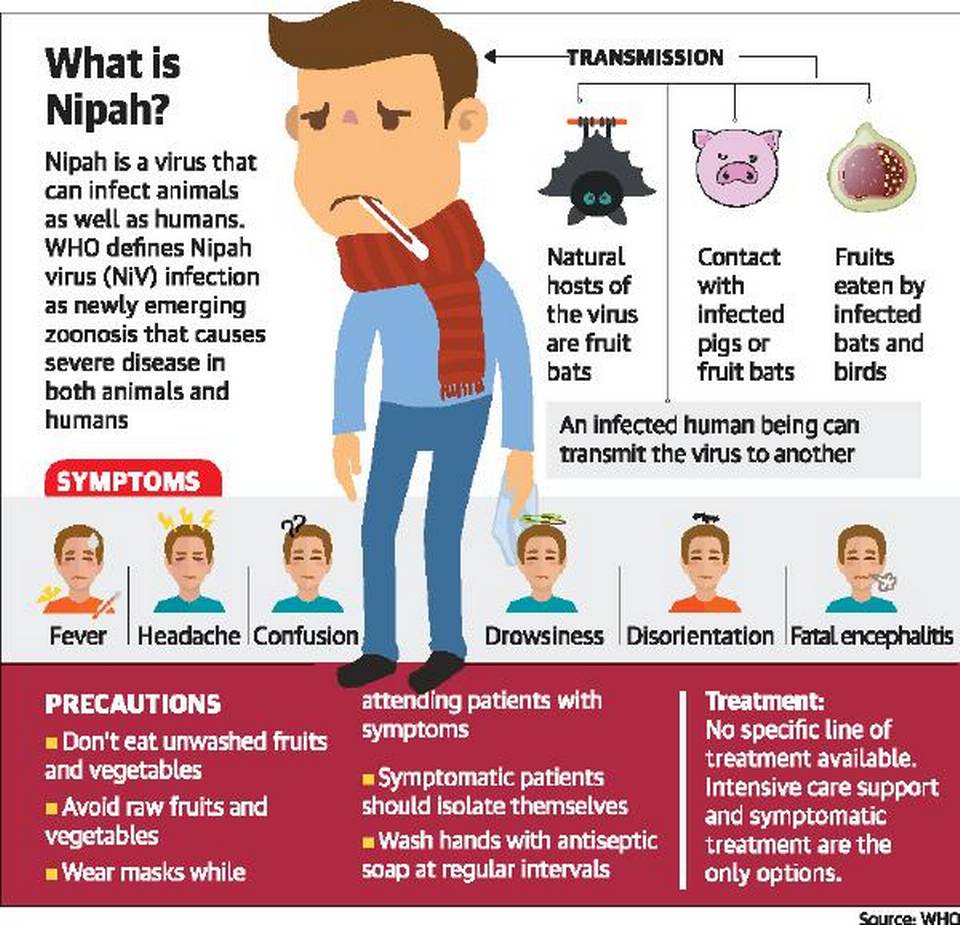 World J Urol. 2020 Mar;38(3):733-740. [PubMed: 30949801]
World J Urol. 2020 Mar;38(3):733-740. [PubMed: 30949801]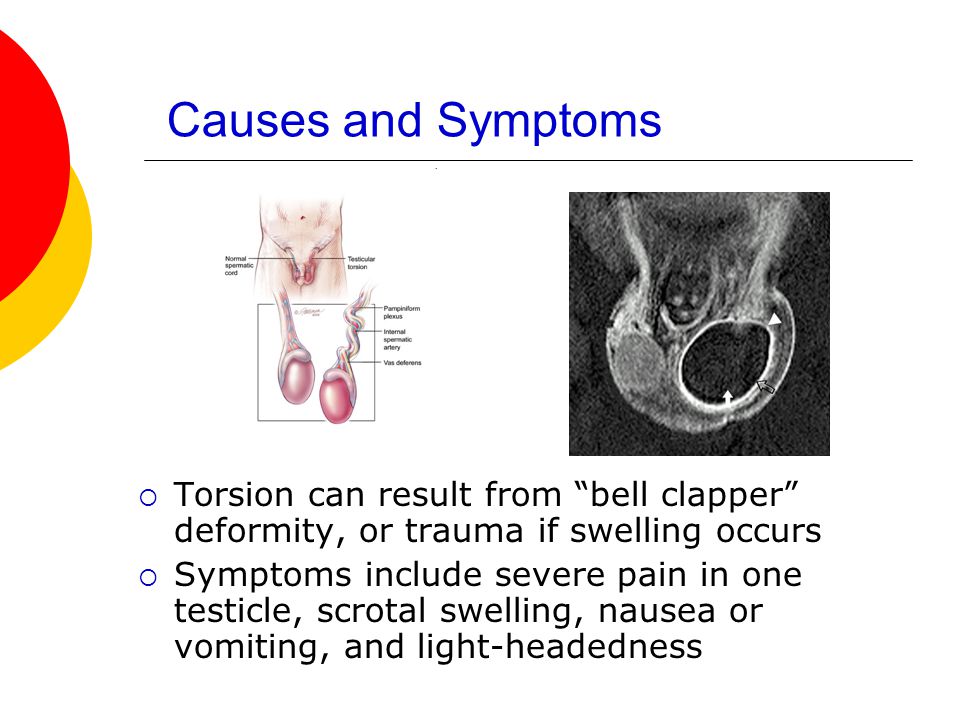 2017 Dec;35(3):146-155. [PMC free article: PMC5746485] [PubMed: 29282906]
2017 Dec;35(3):146-155. [PMC free article: PMC5746485] [PubMed: 29282906]
 coli for example) in the urethra that travels to the testicles and sexually transmitted infections (STIs) such as gonorrhea and chlamydia.
coli for example) in the urethra that travels to the testicles and sexually transmitted infections (STIs) such as gonorrhea and chlamydia.